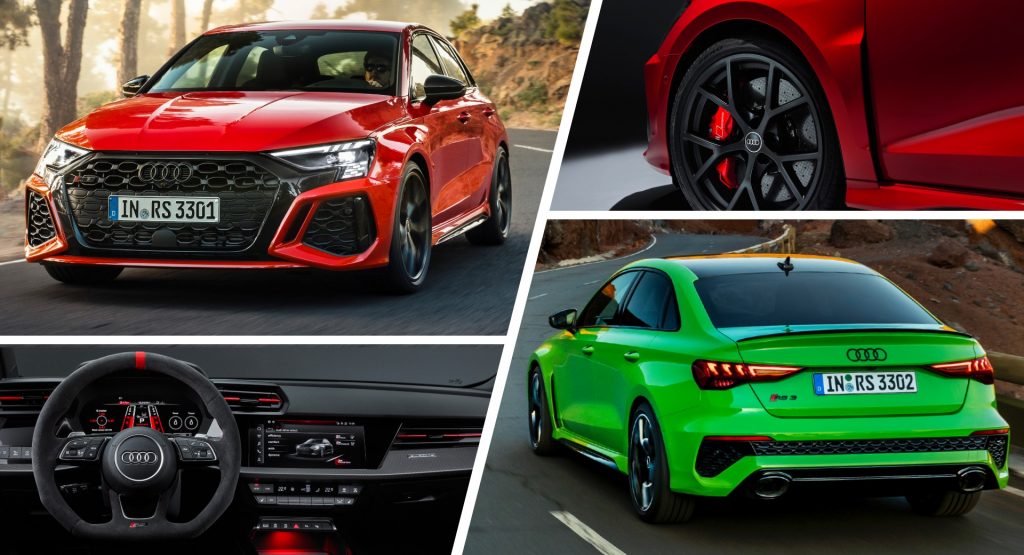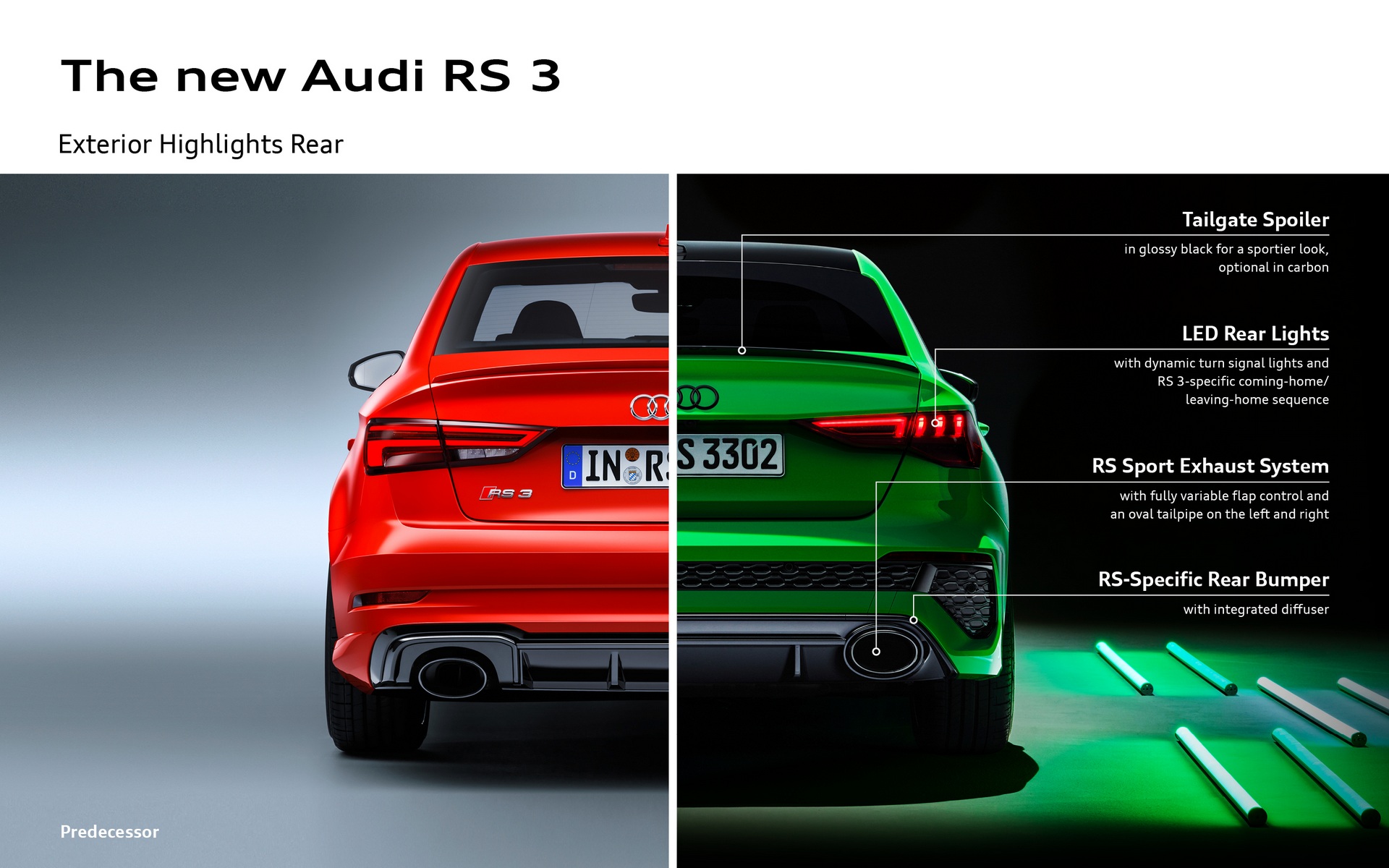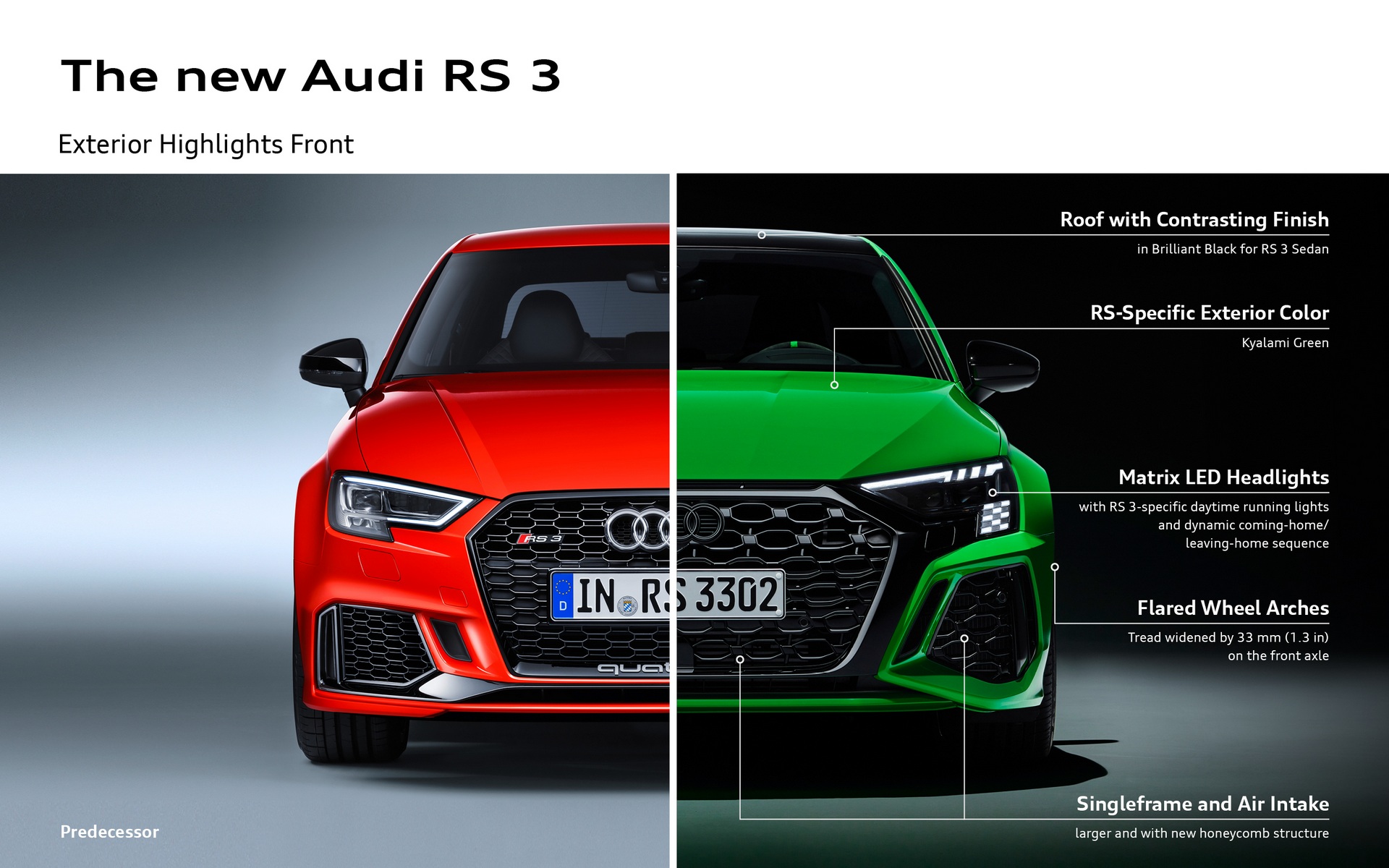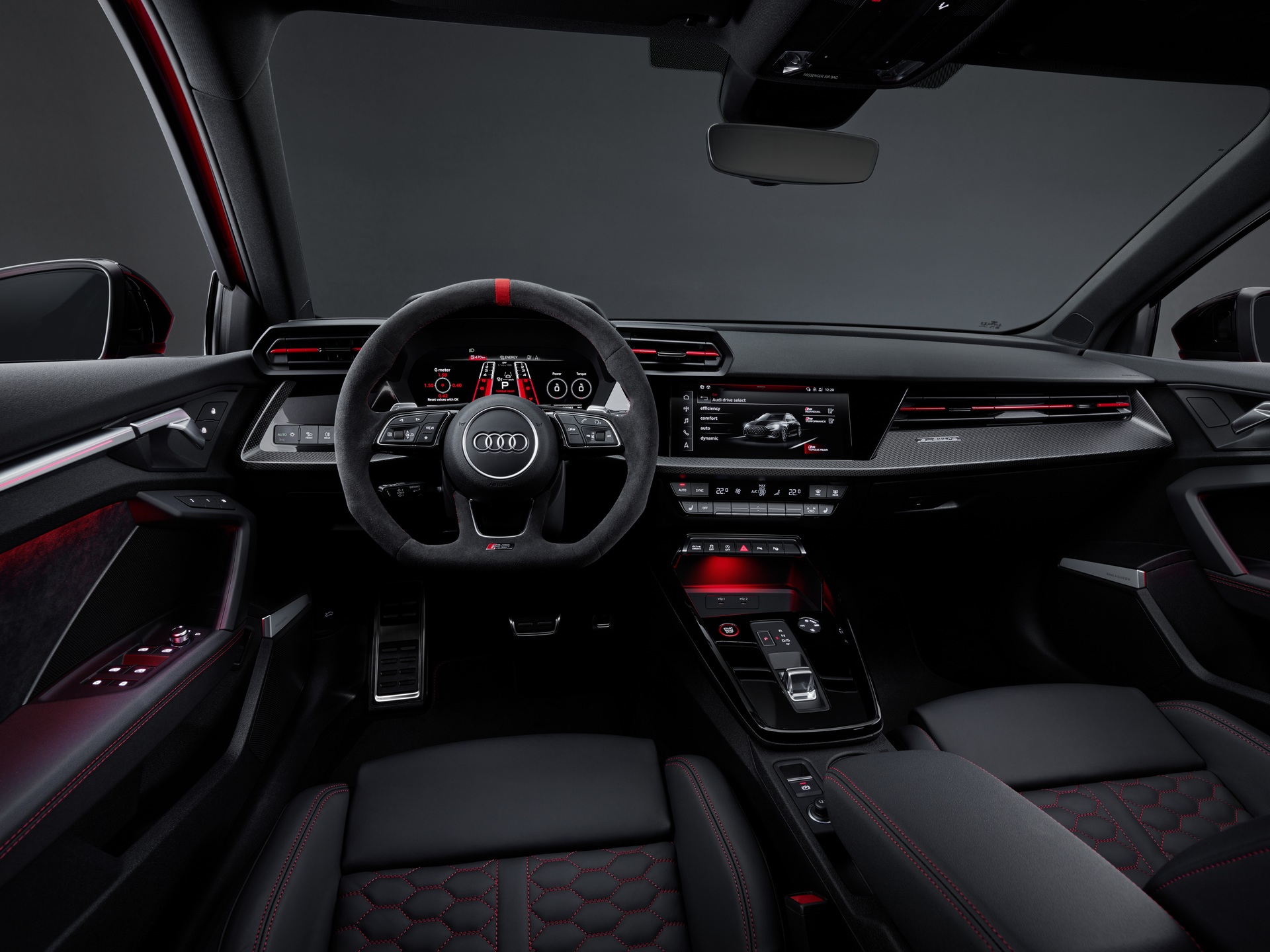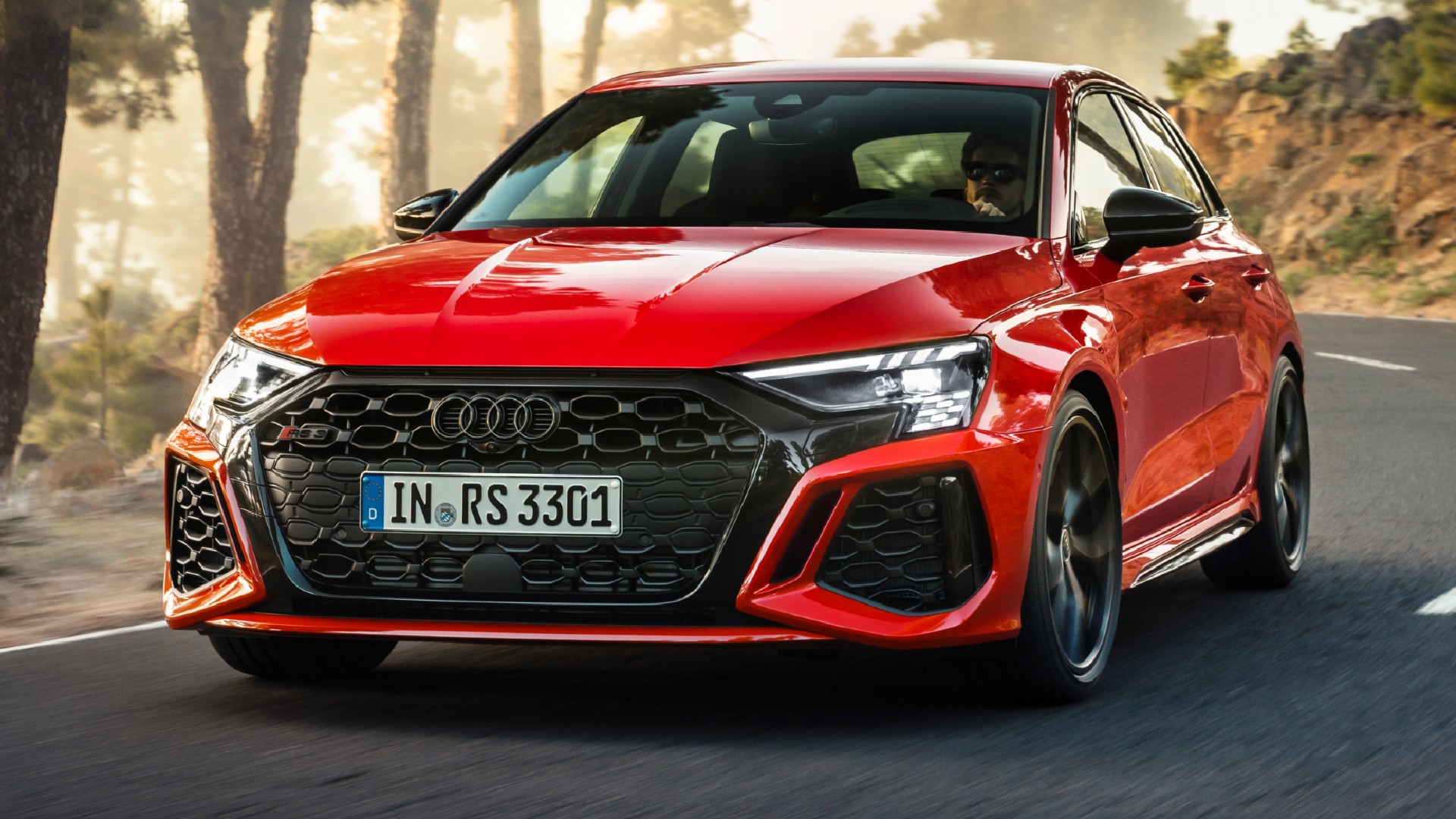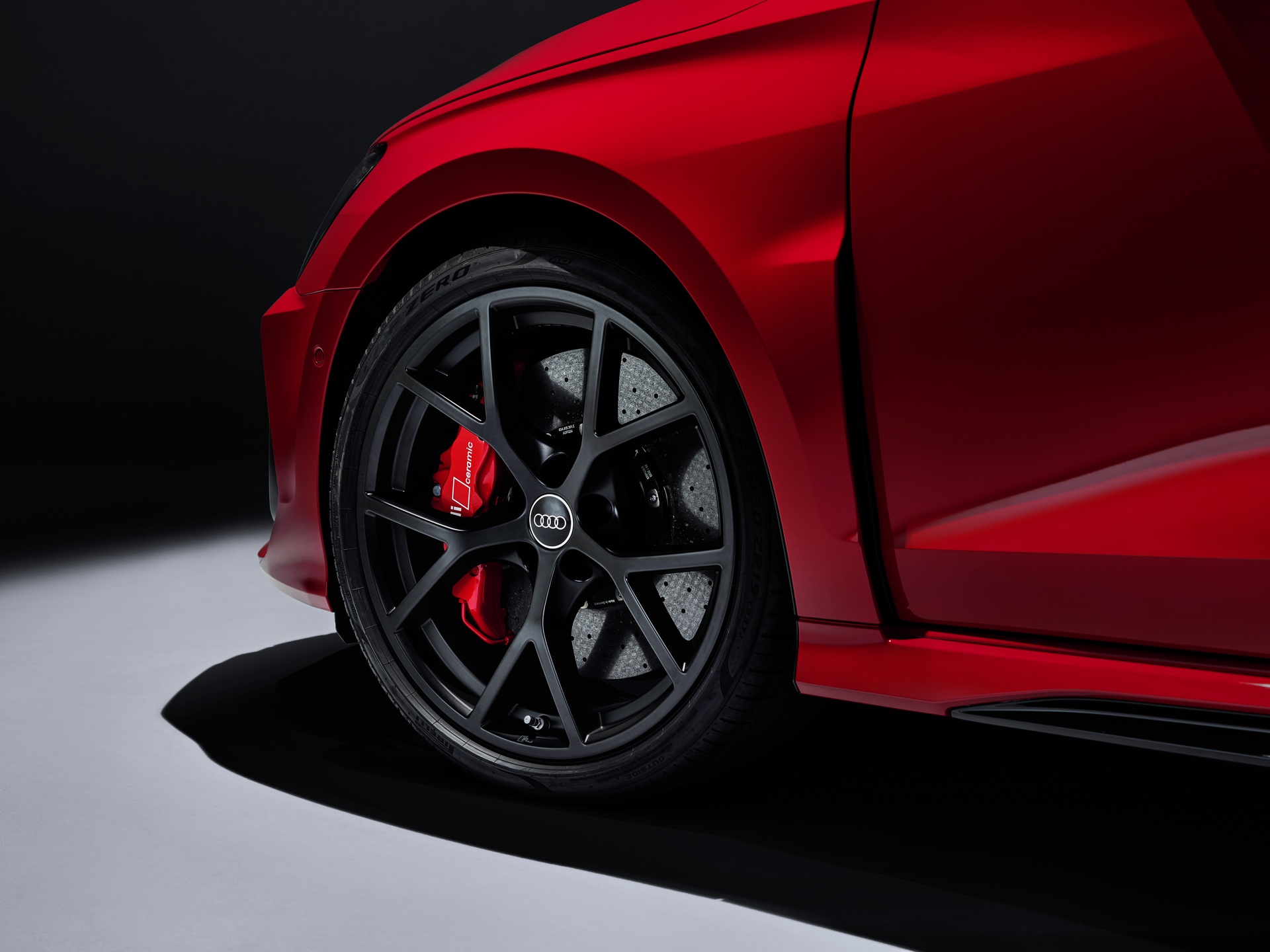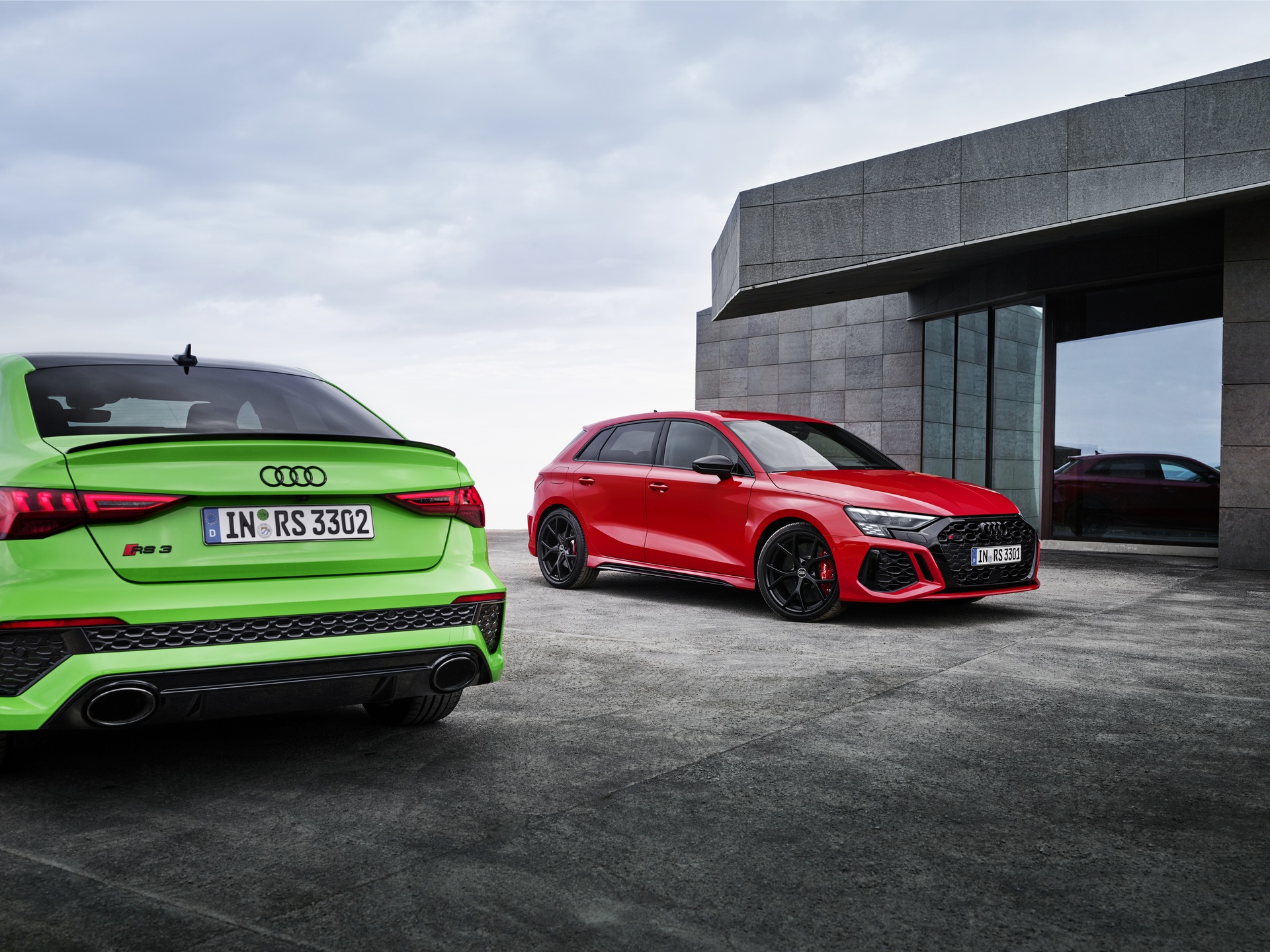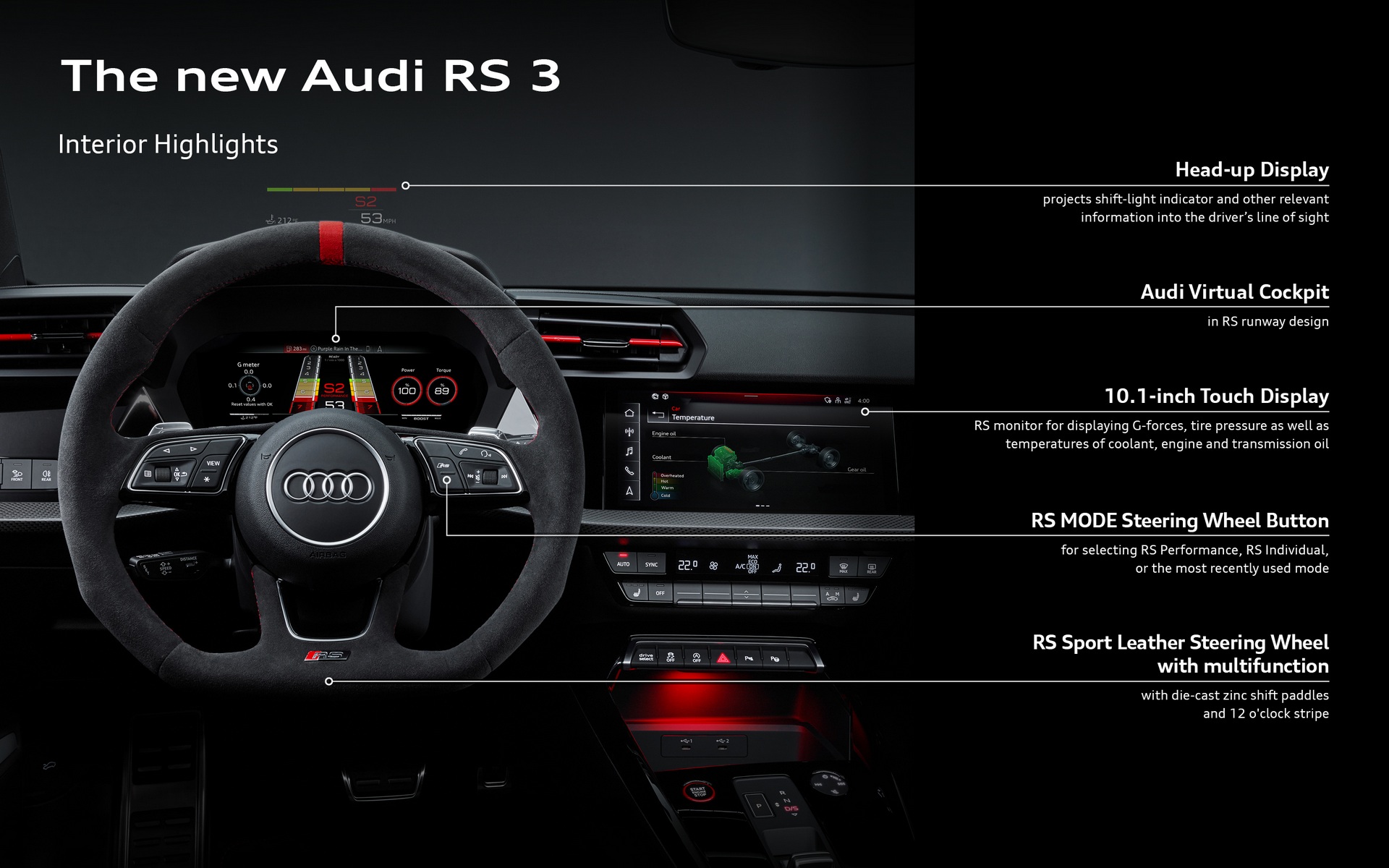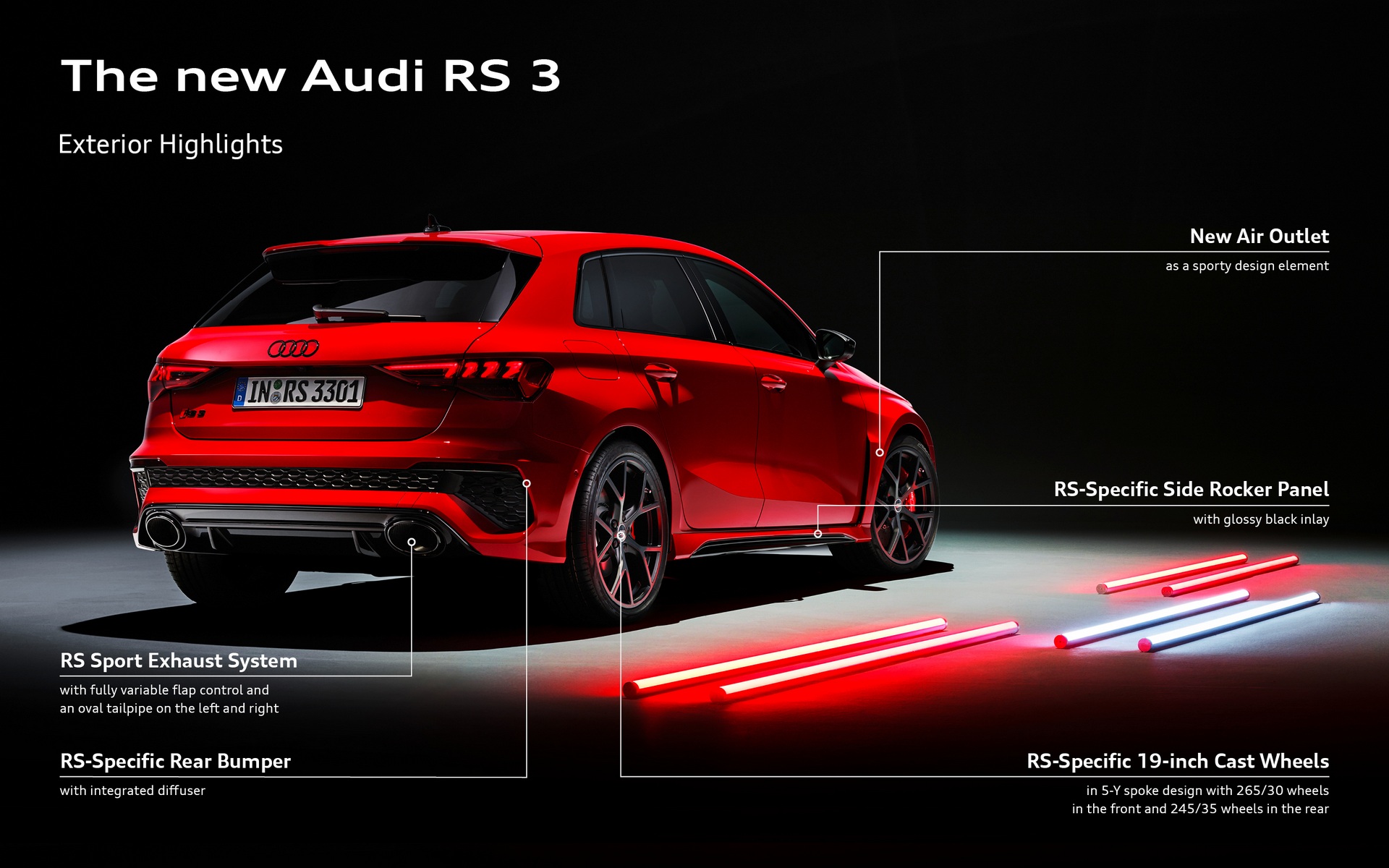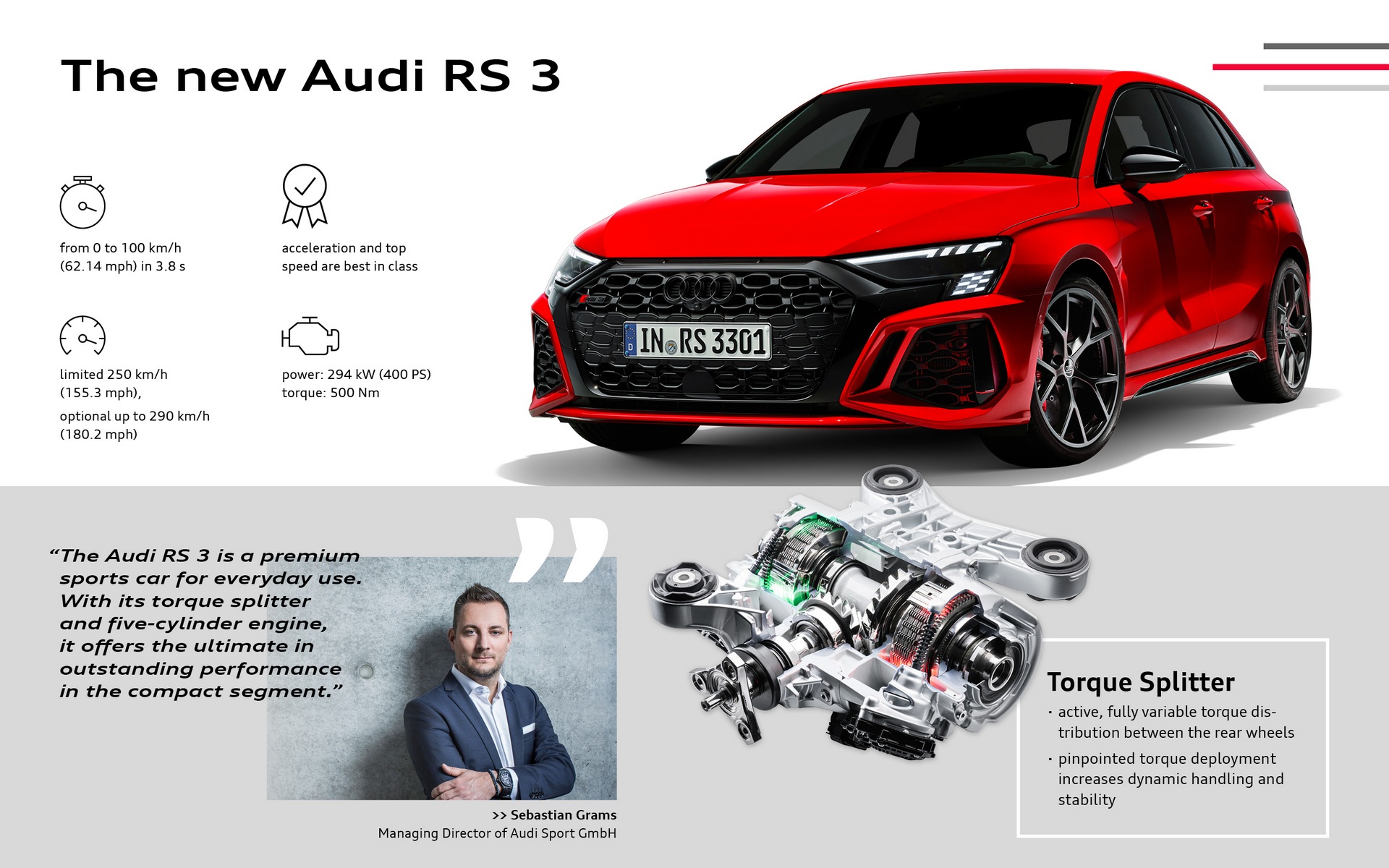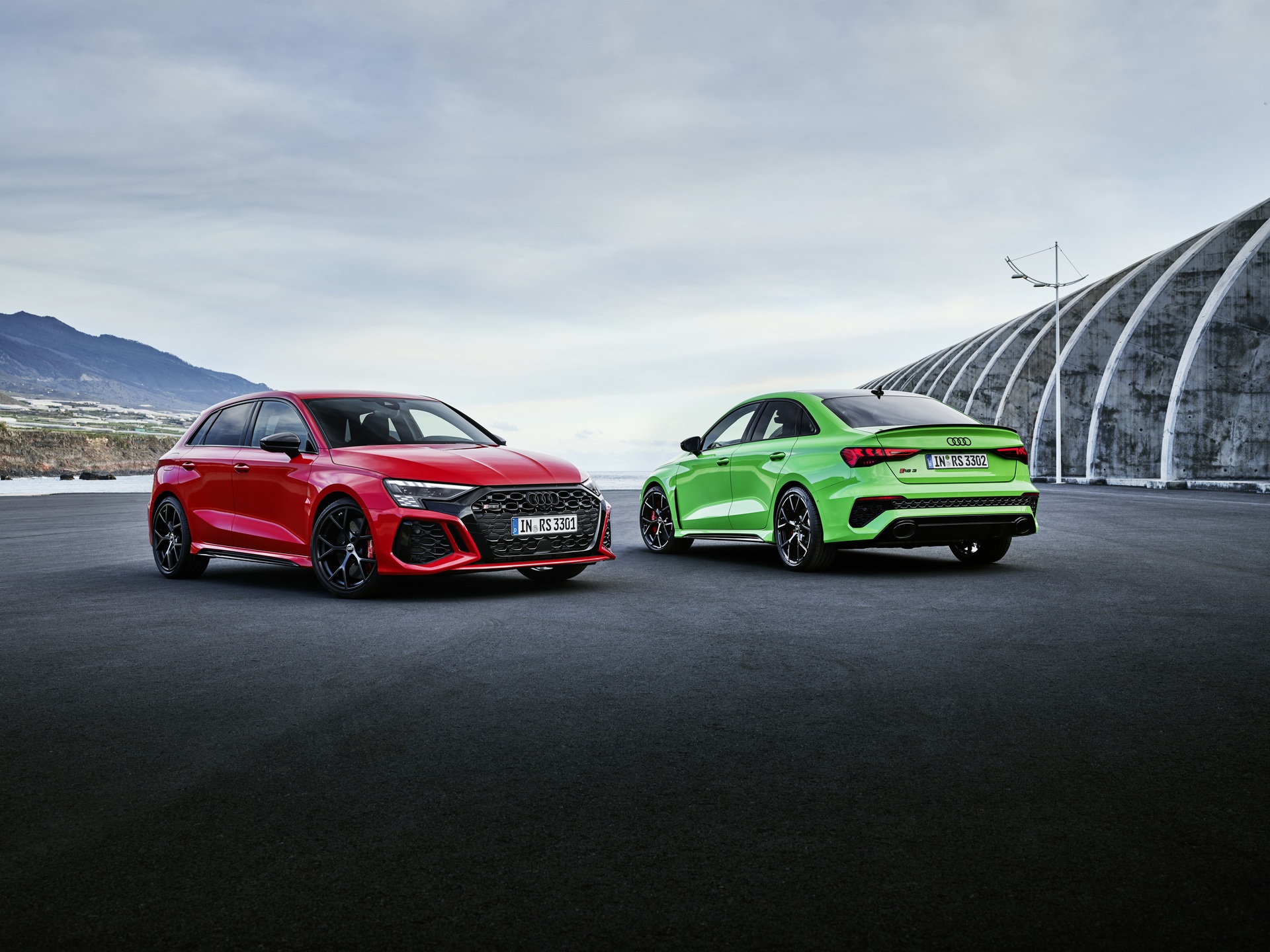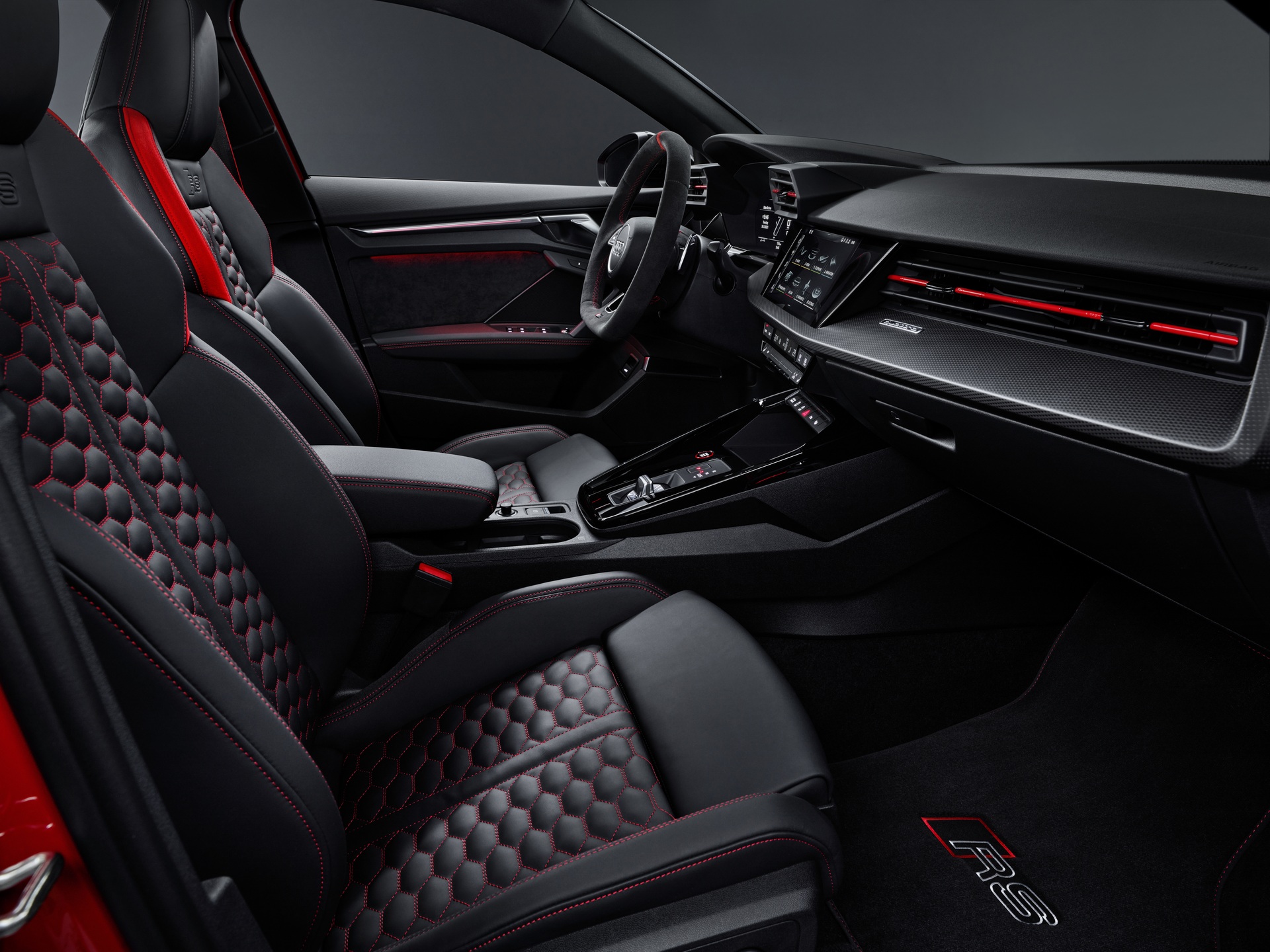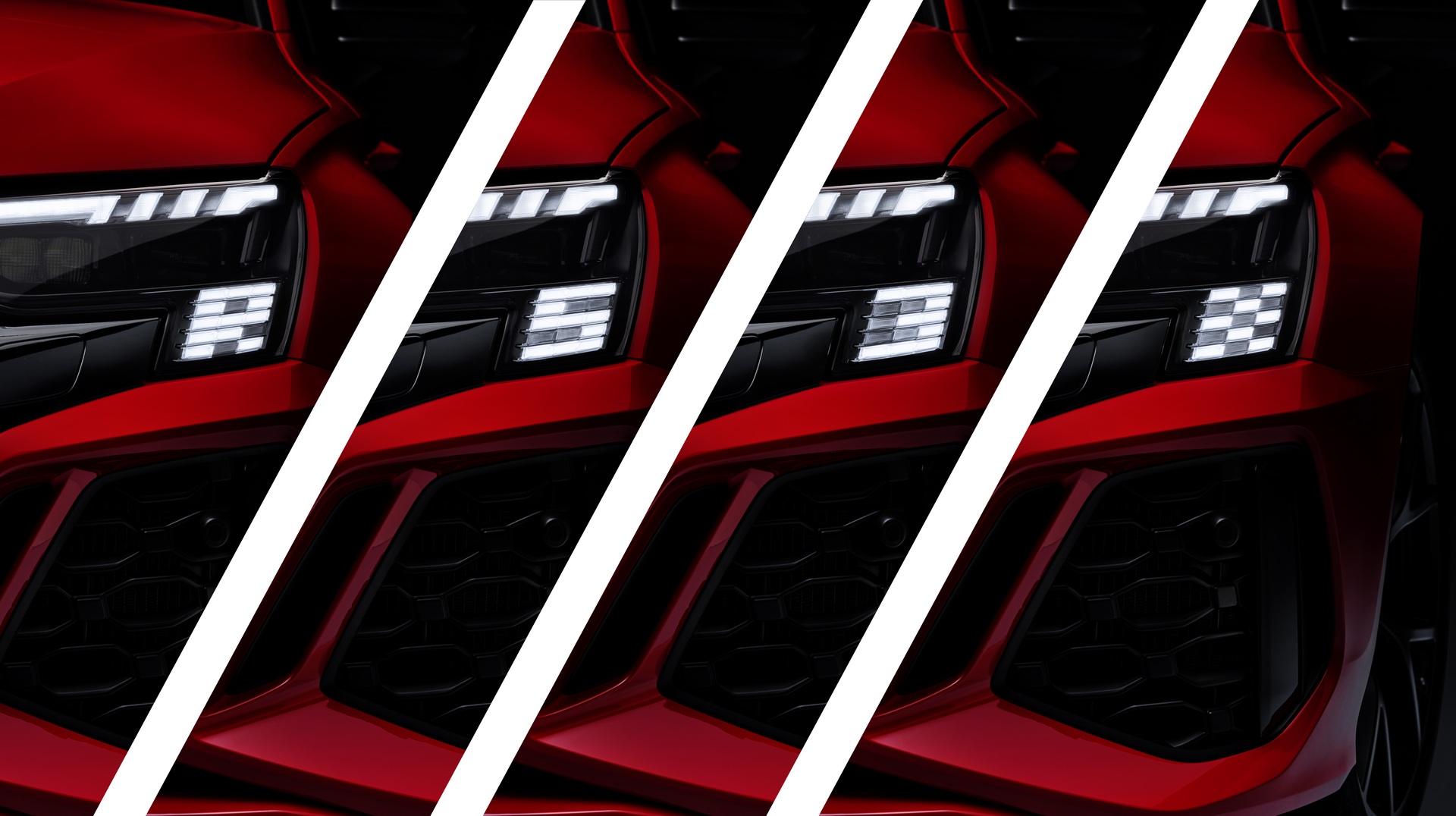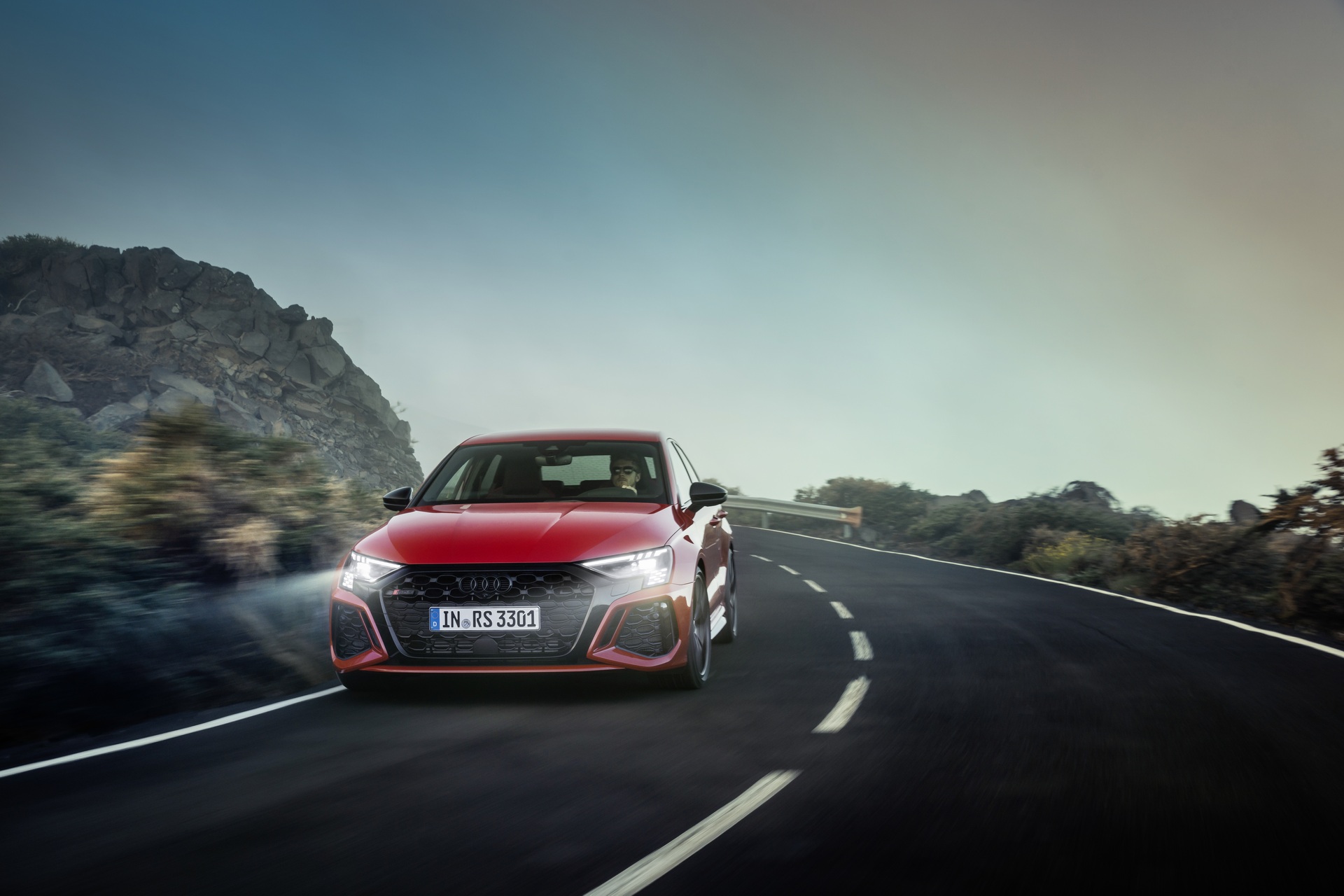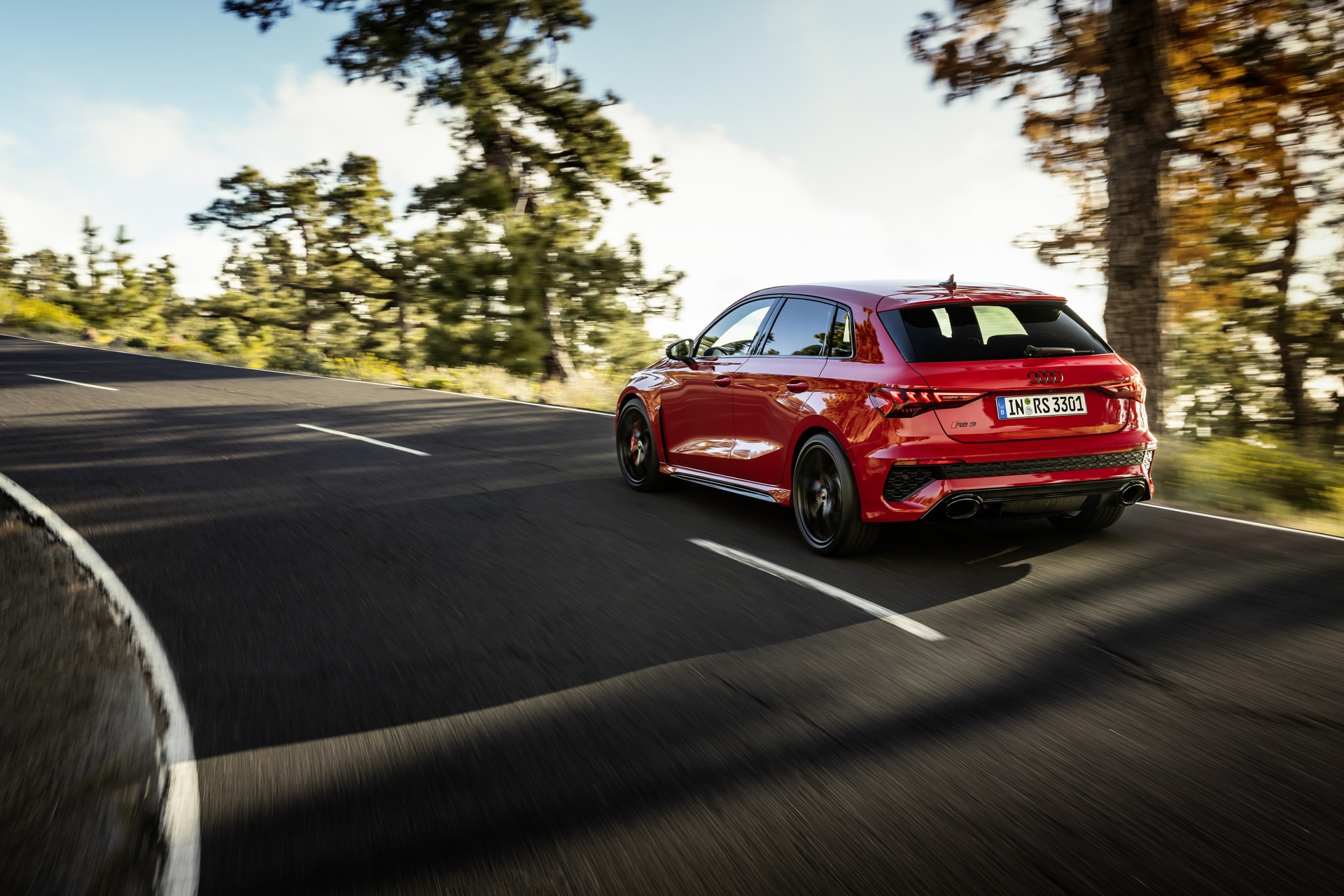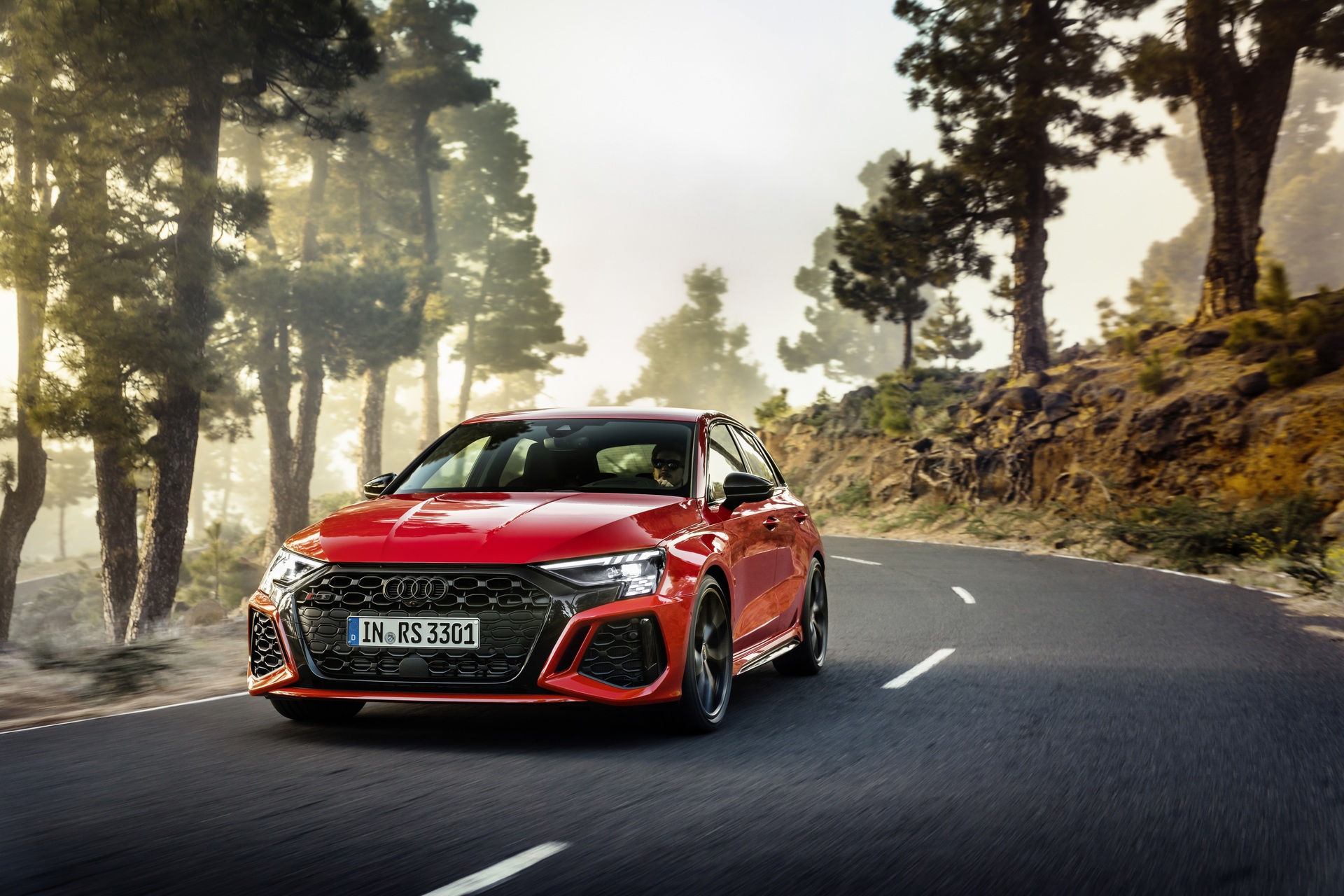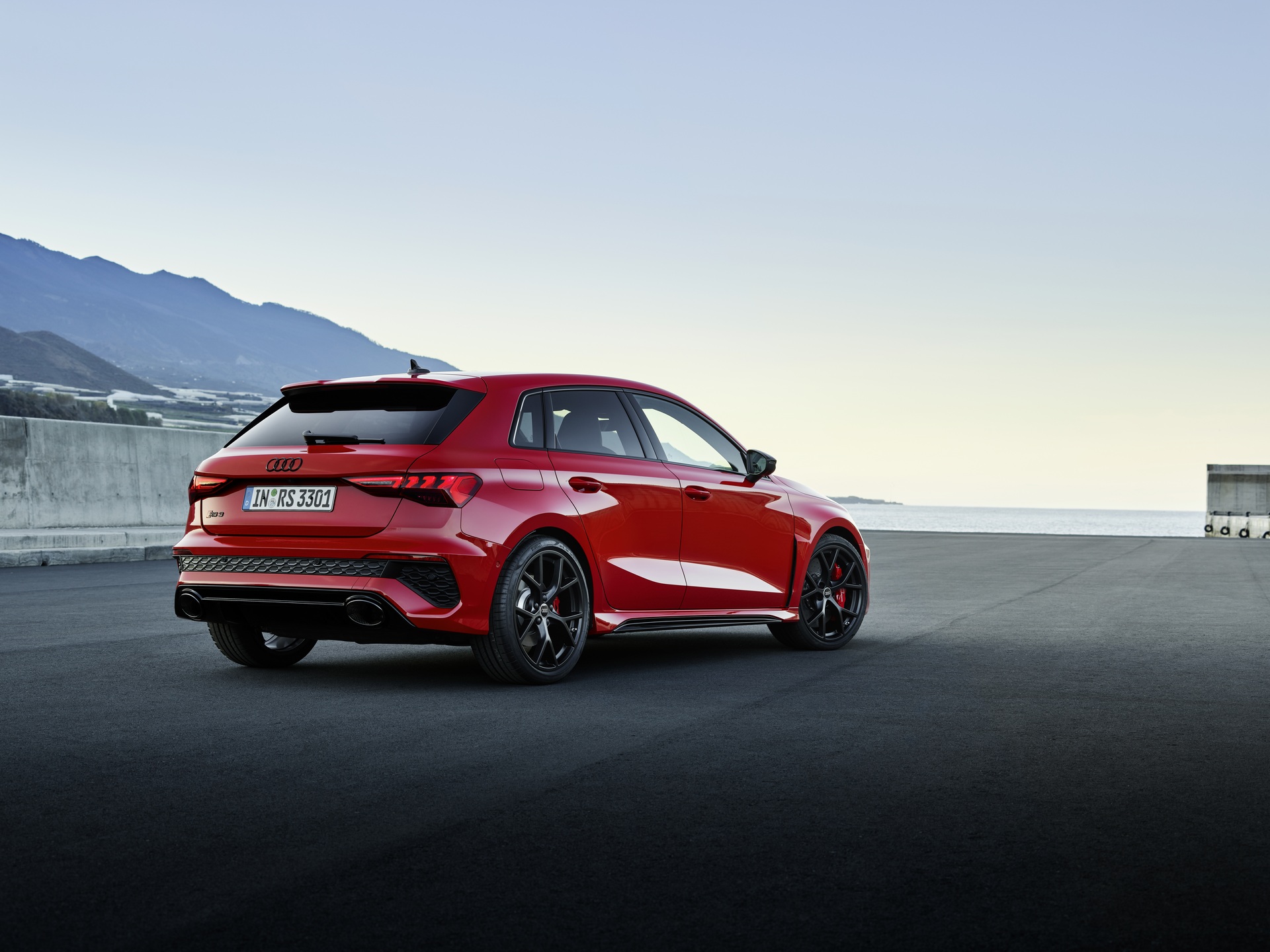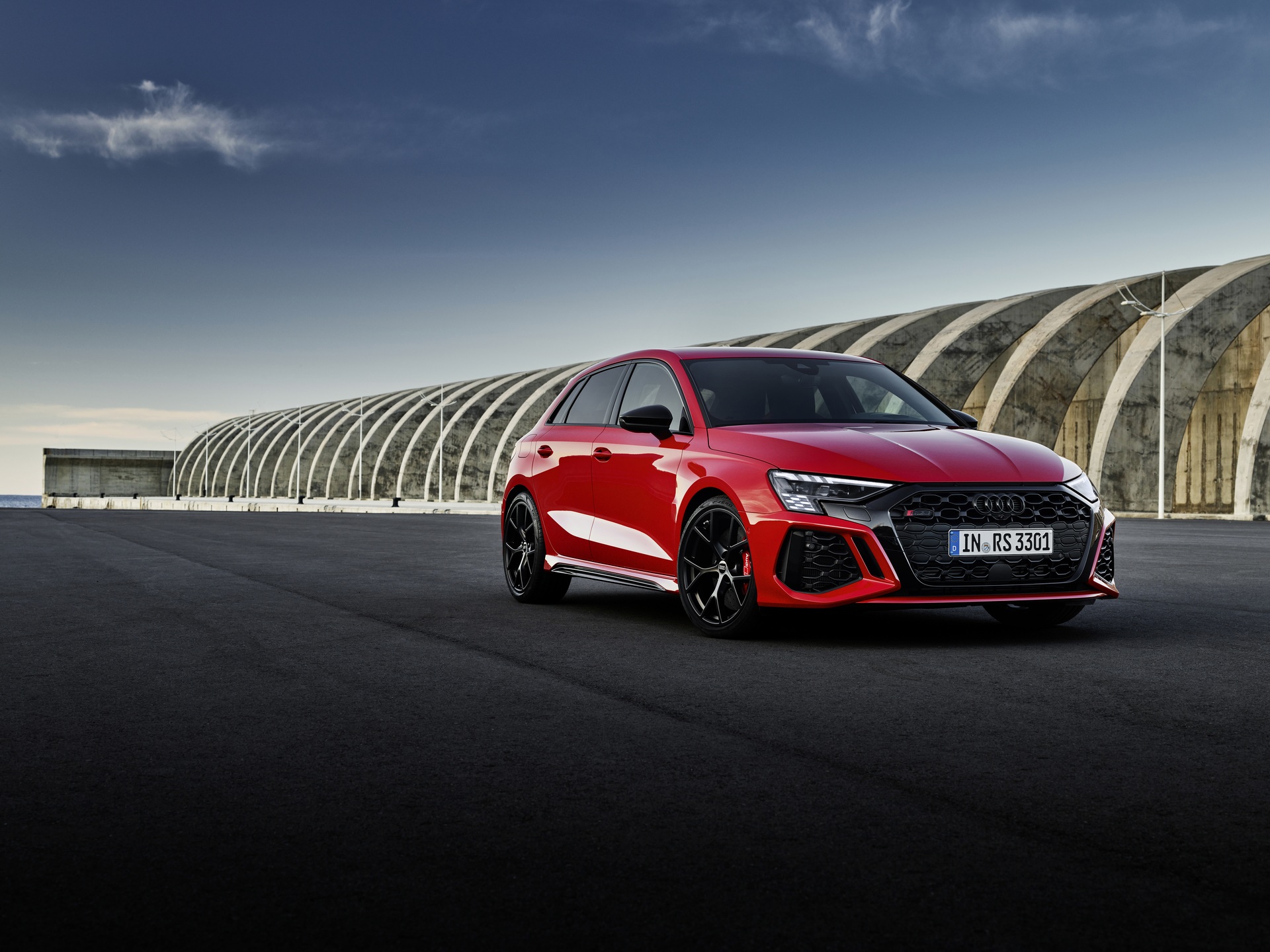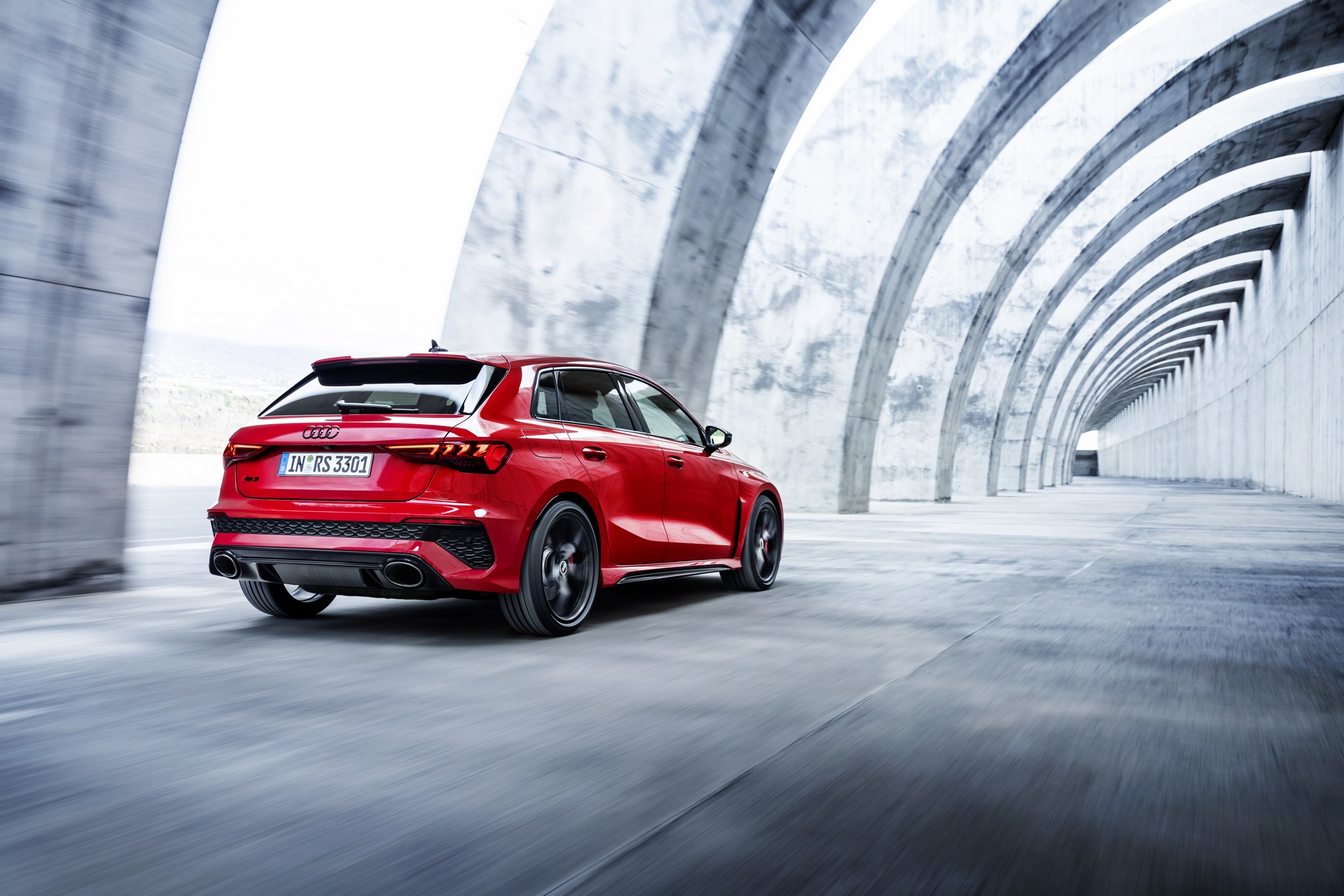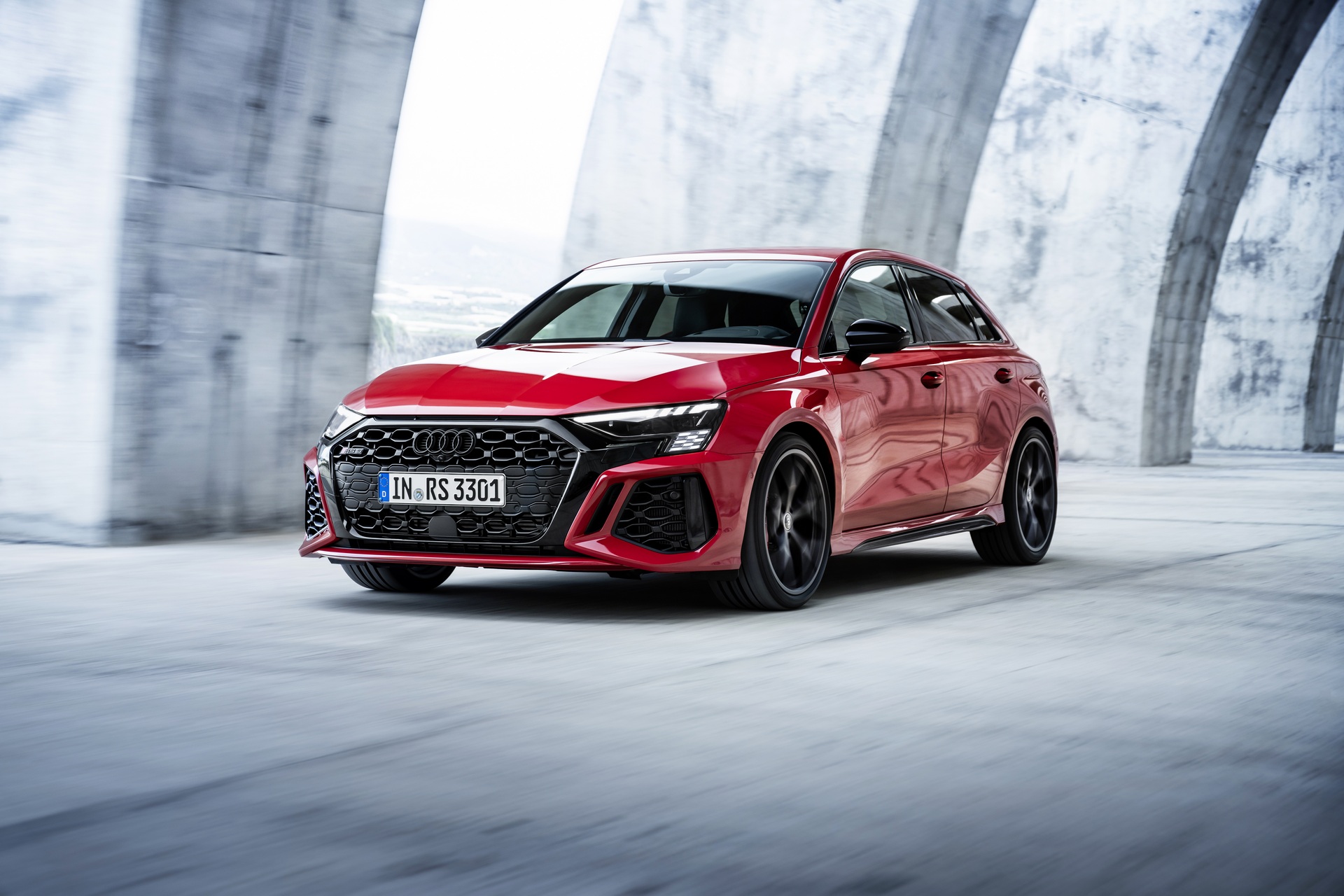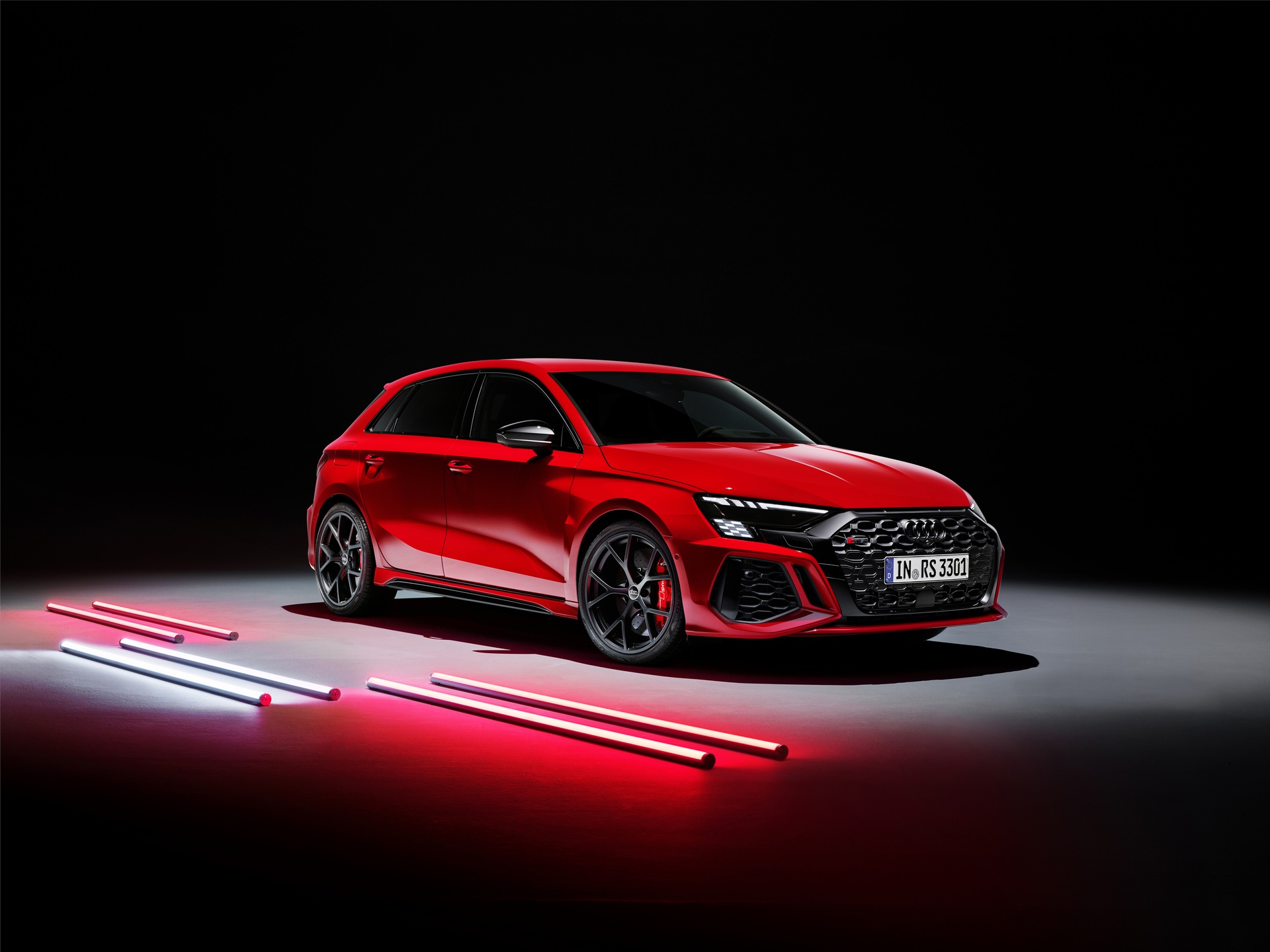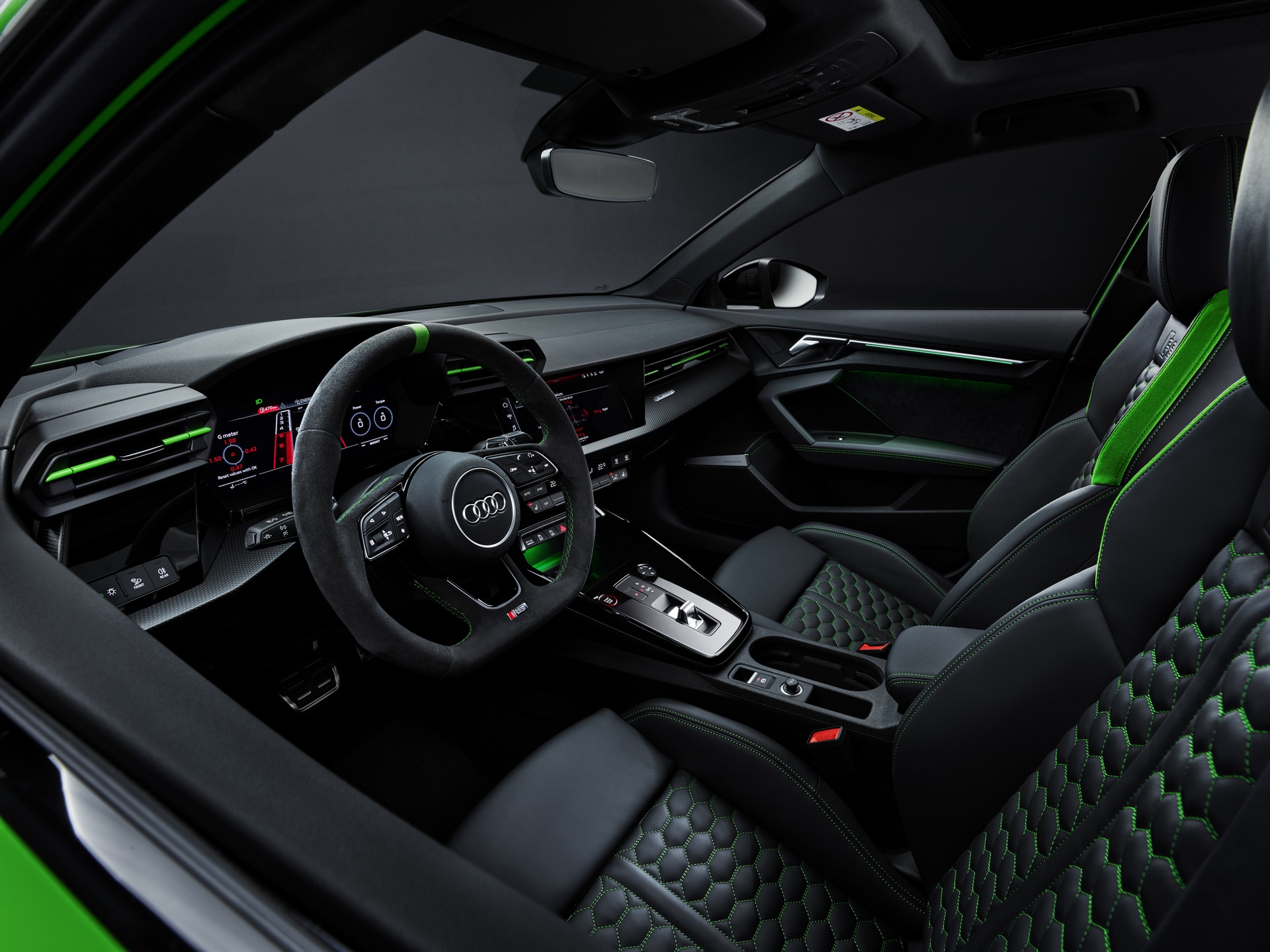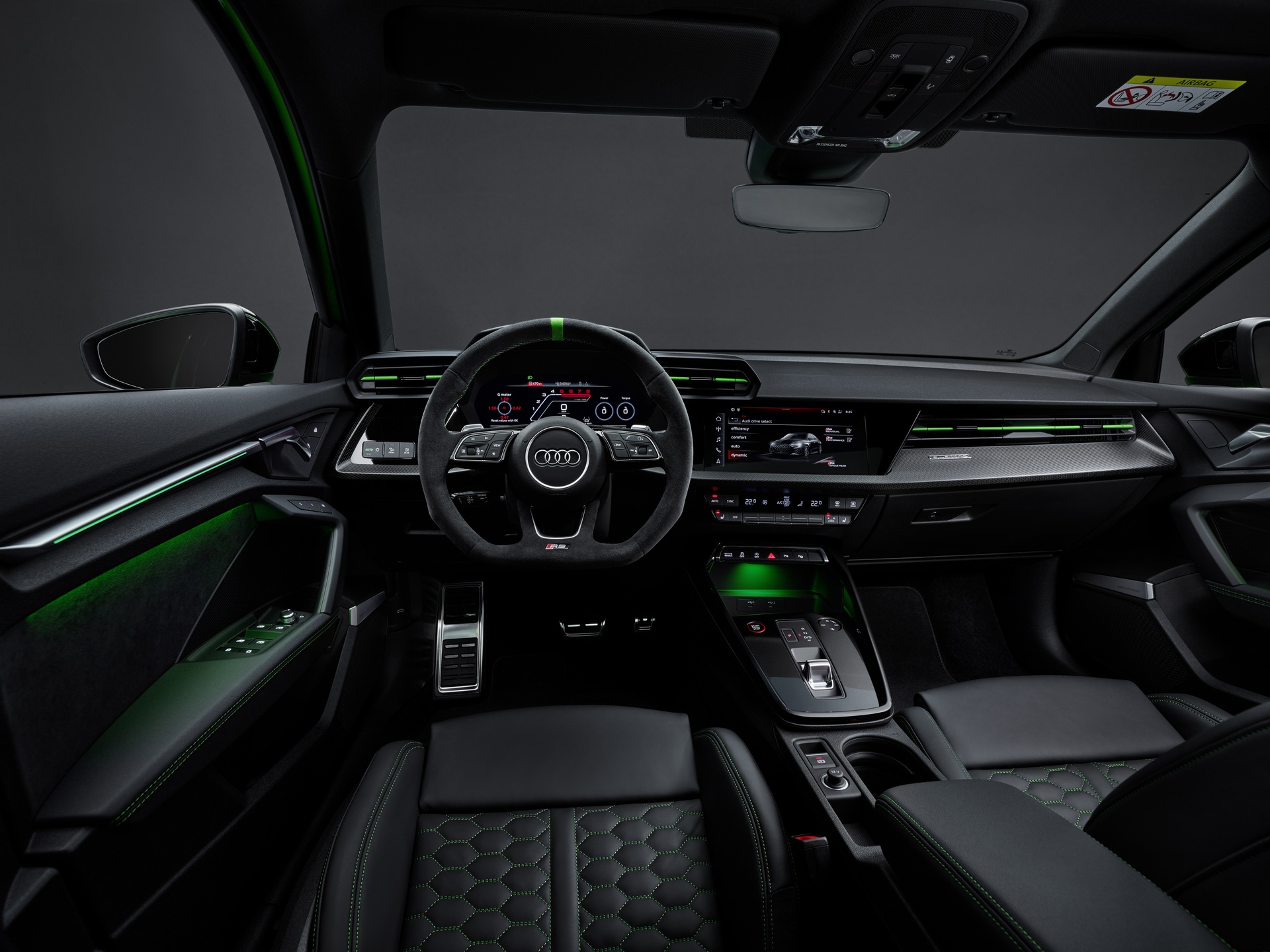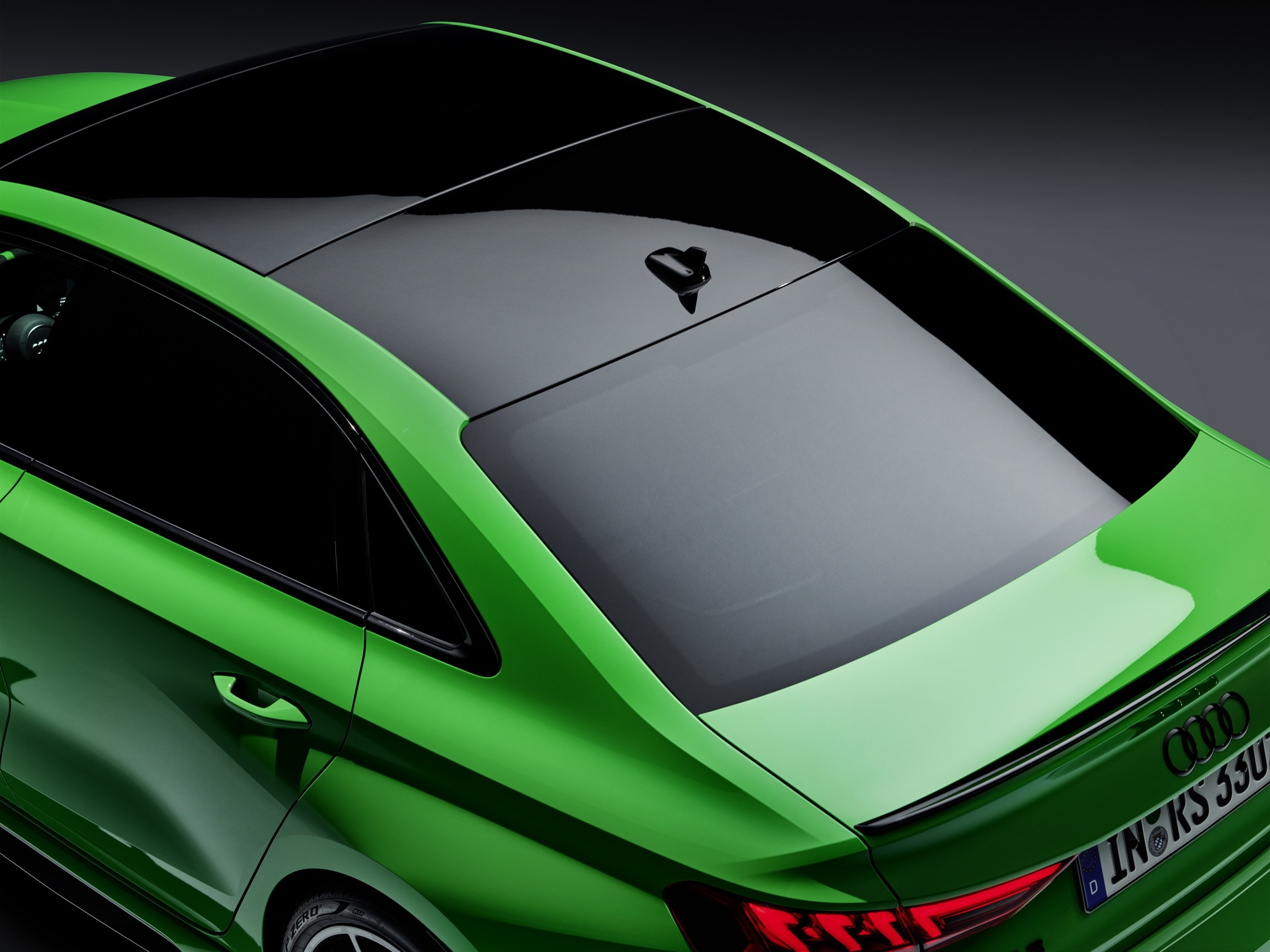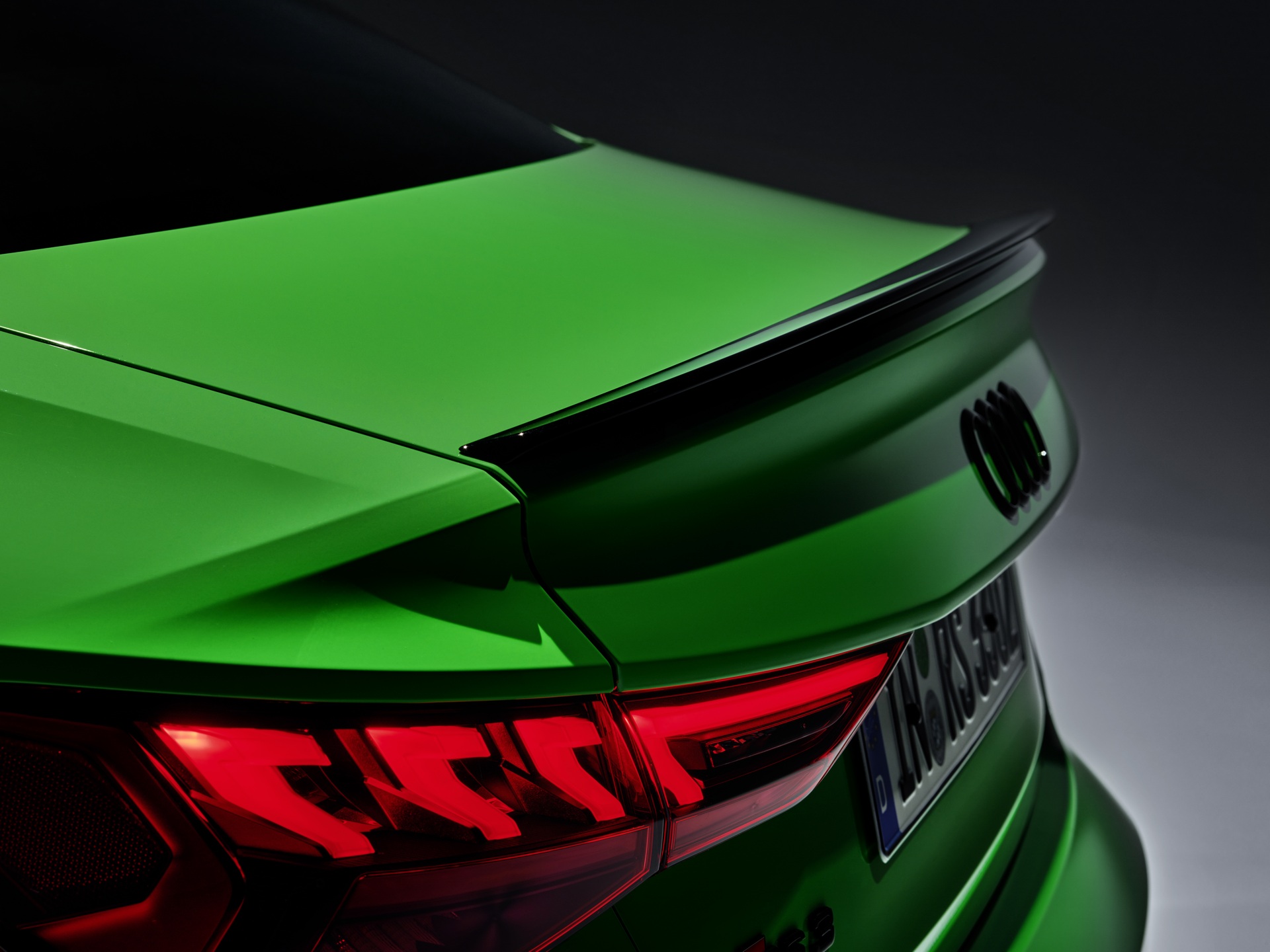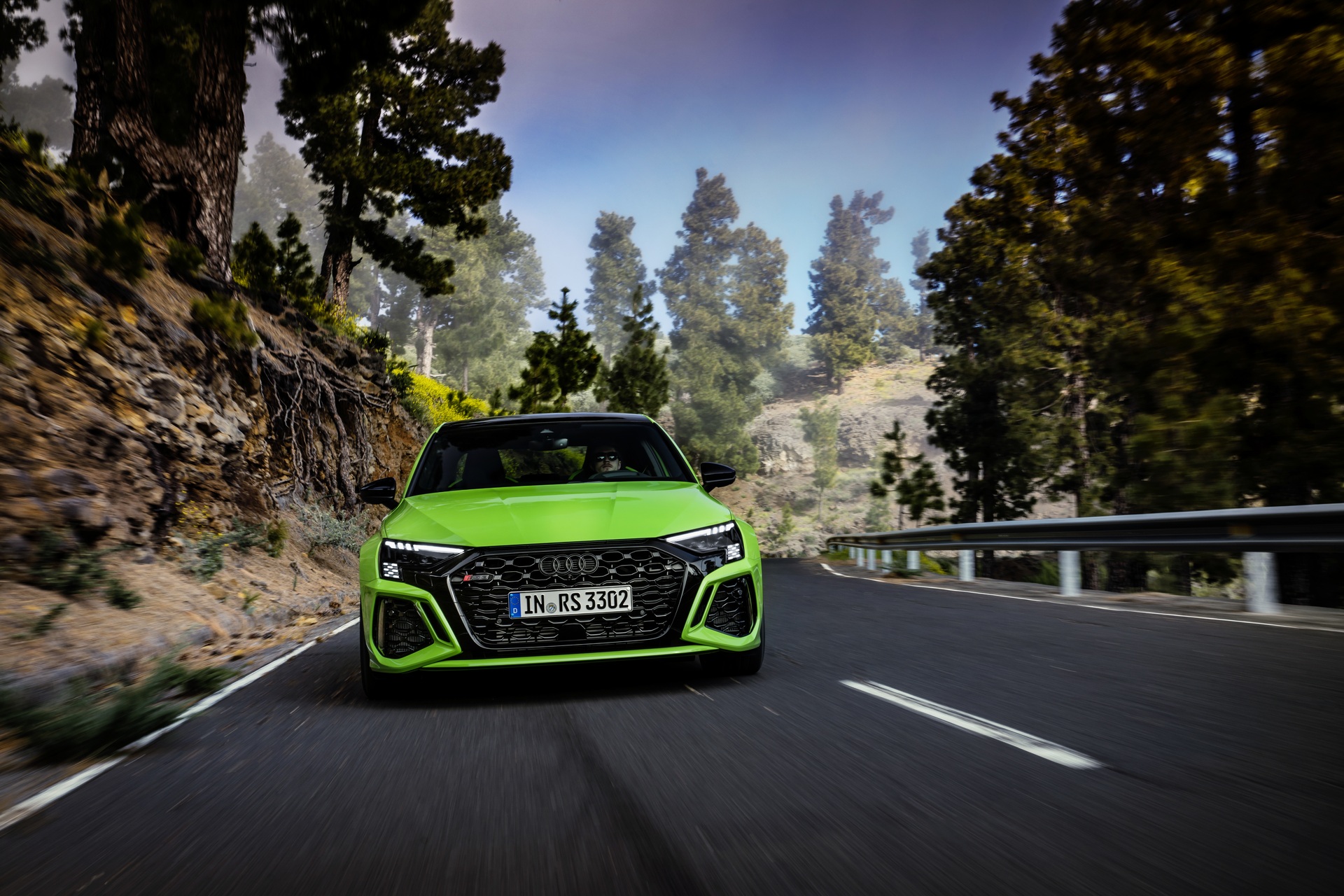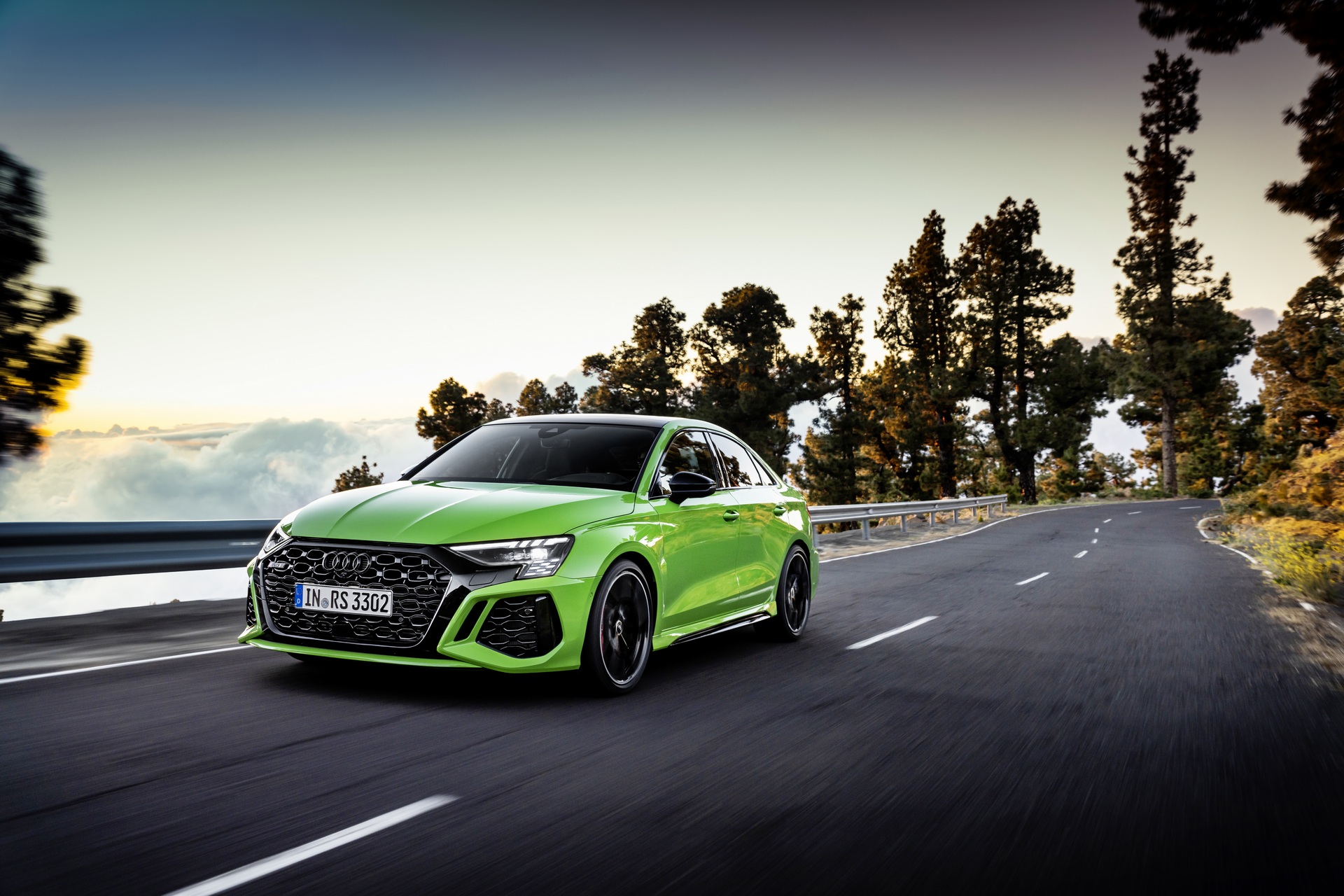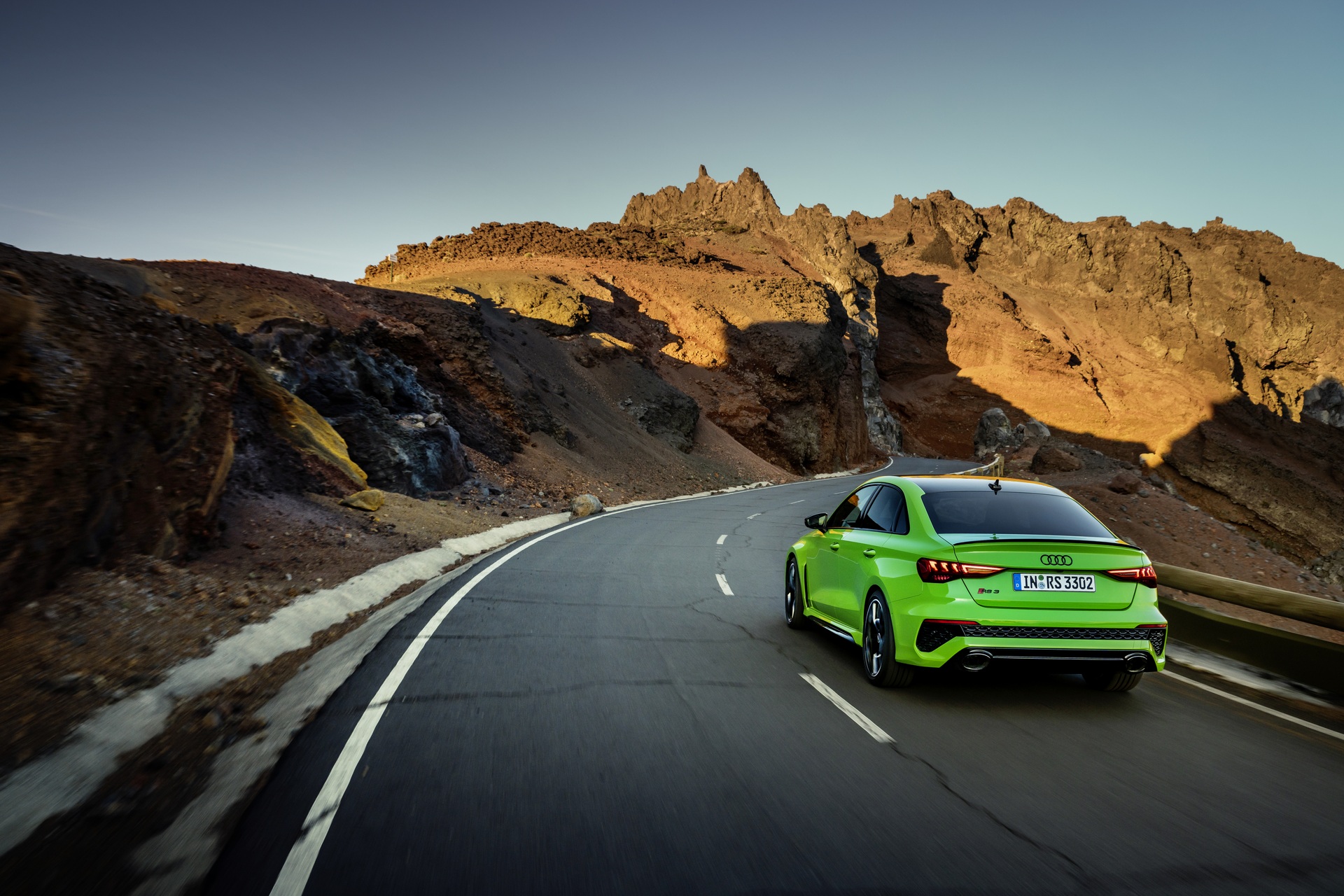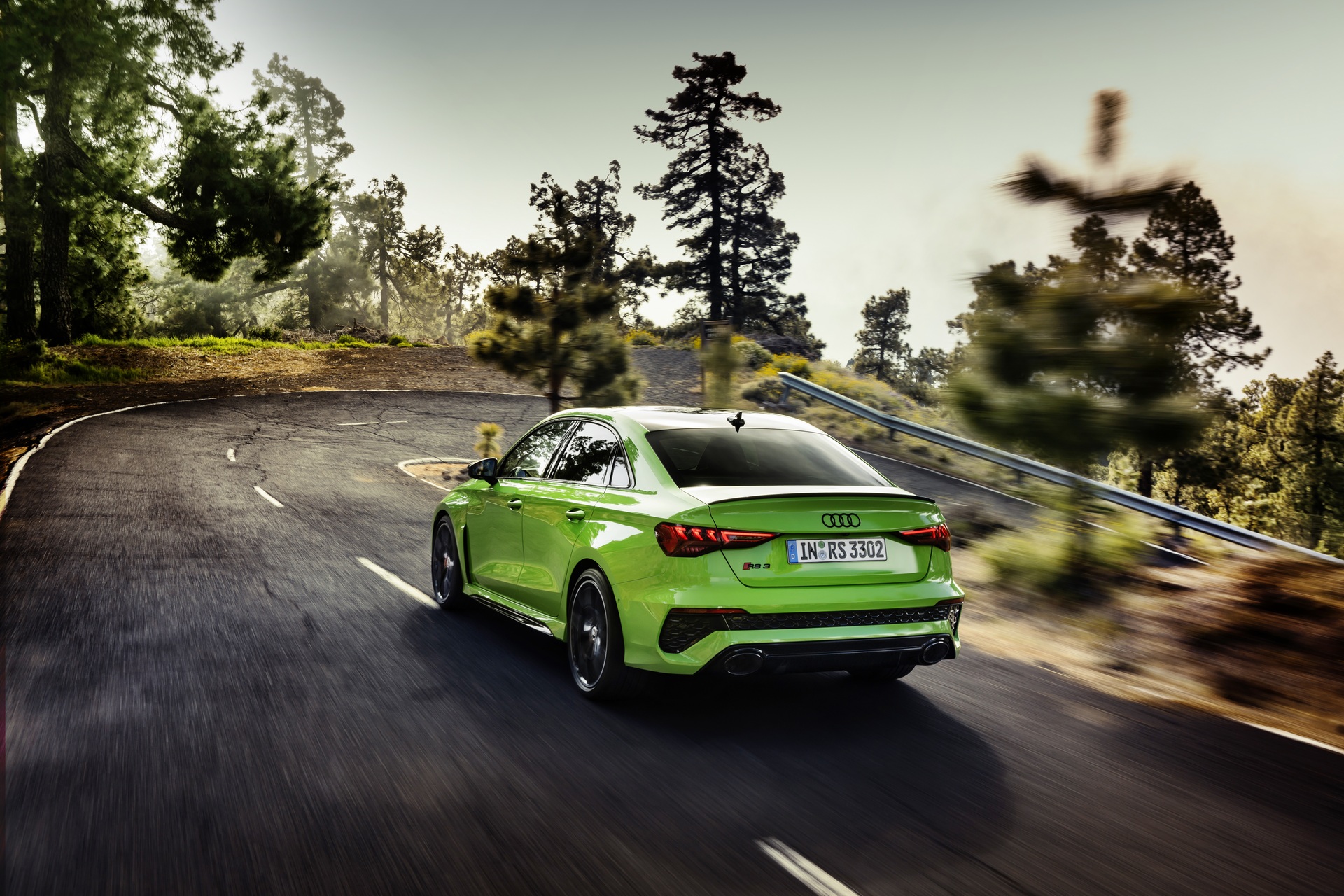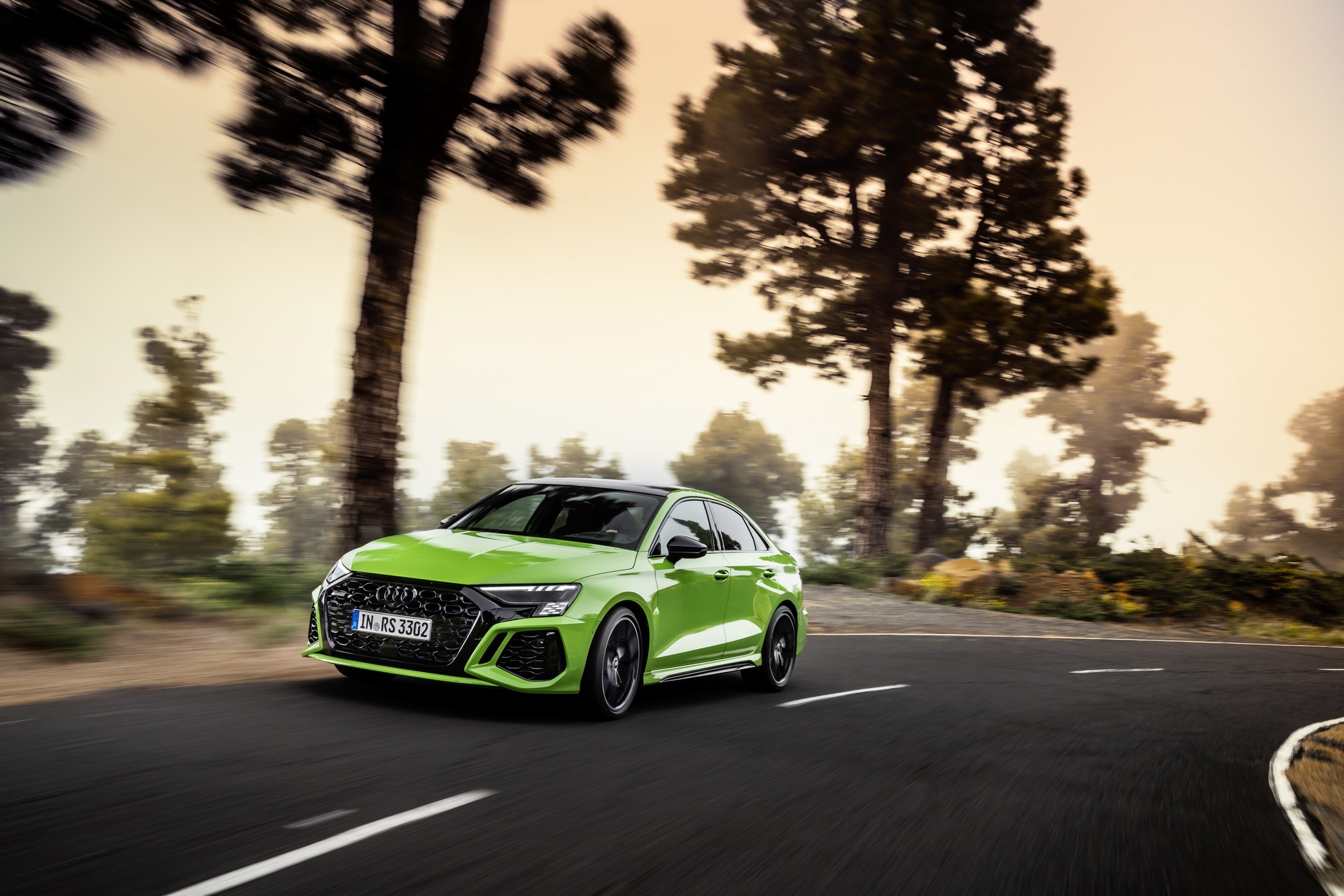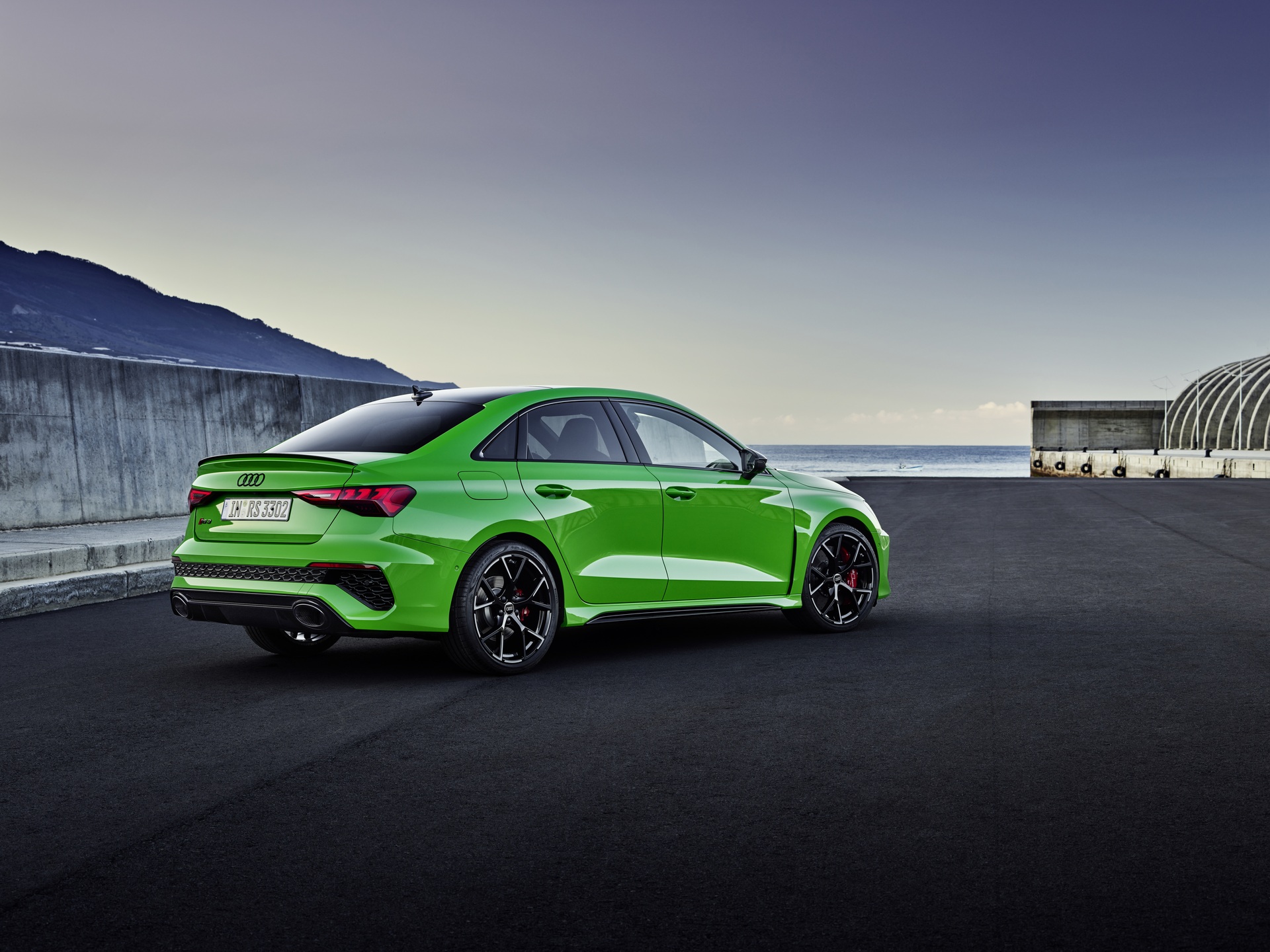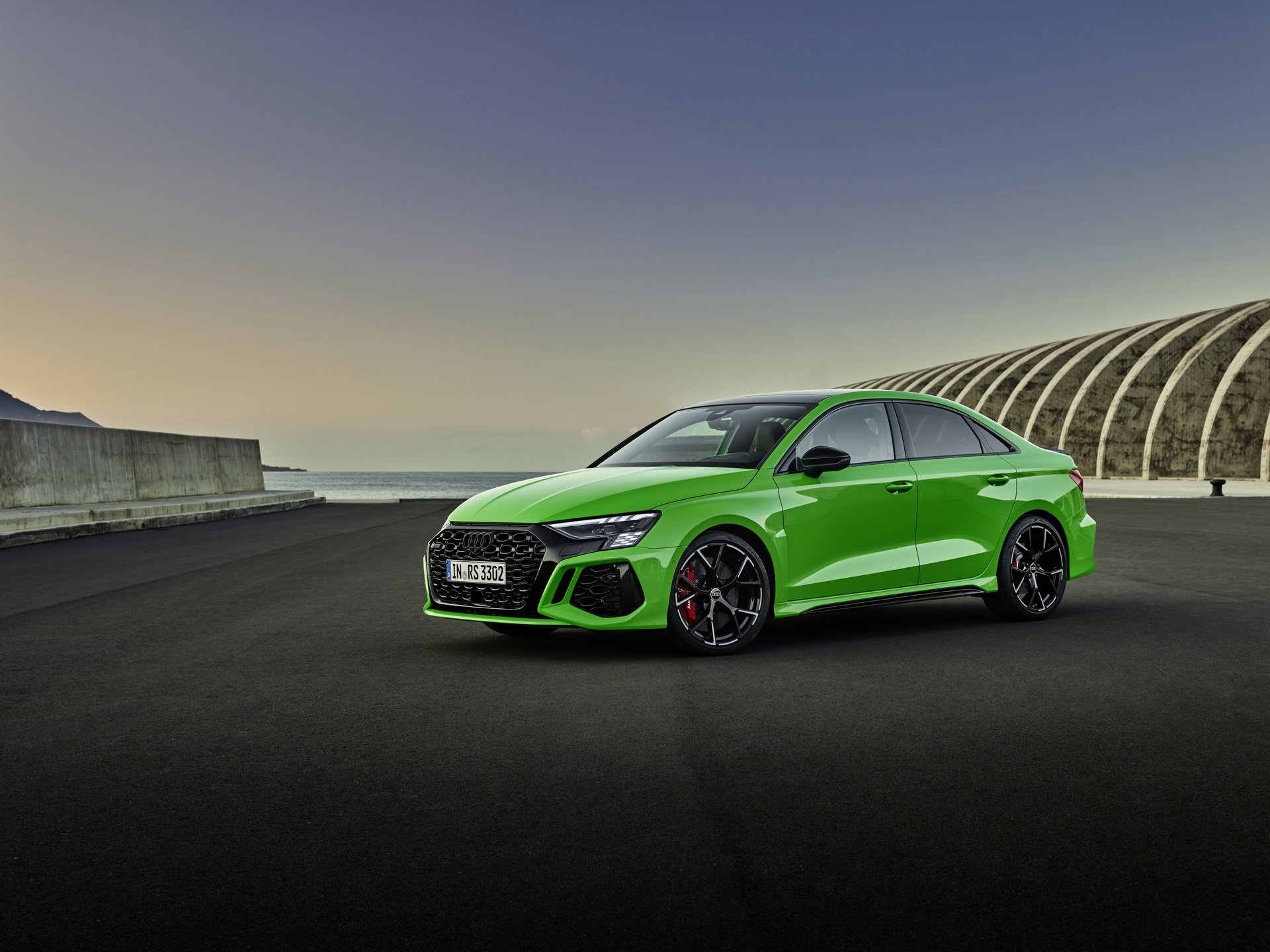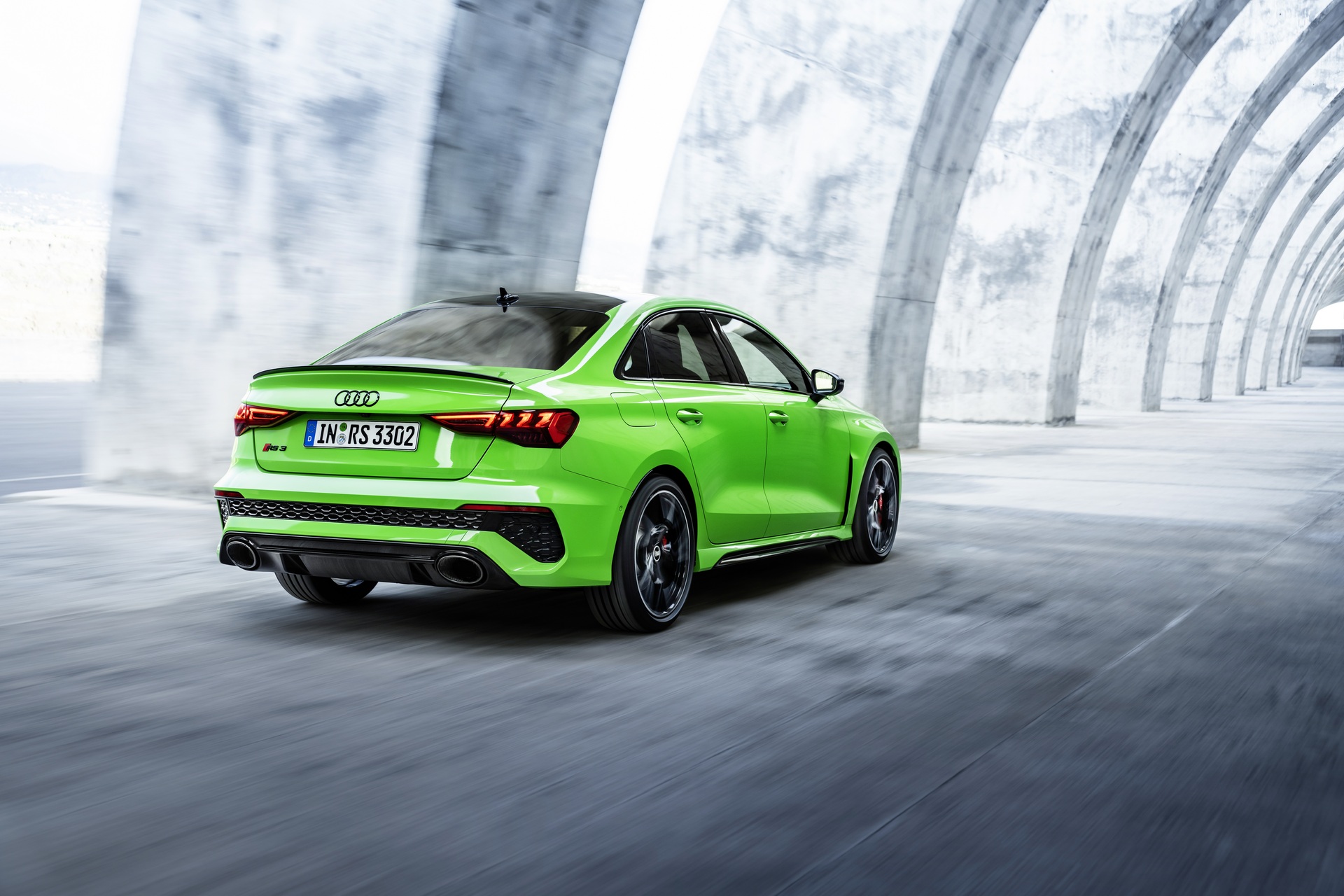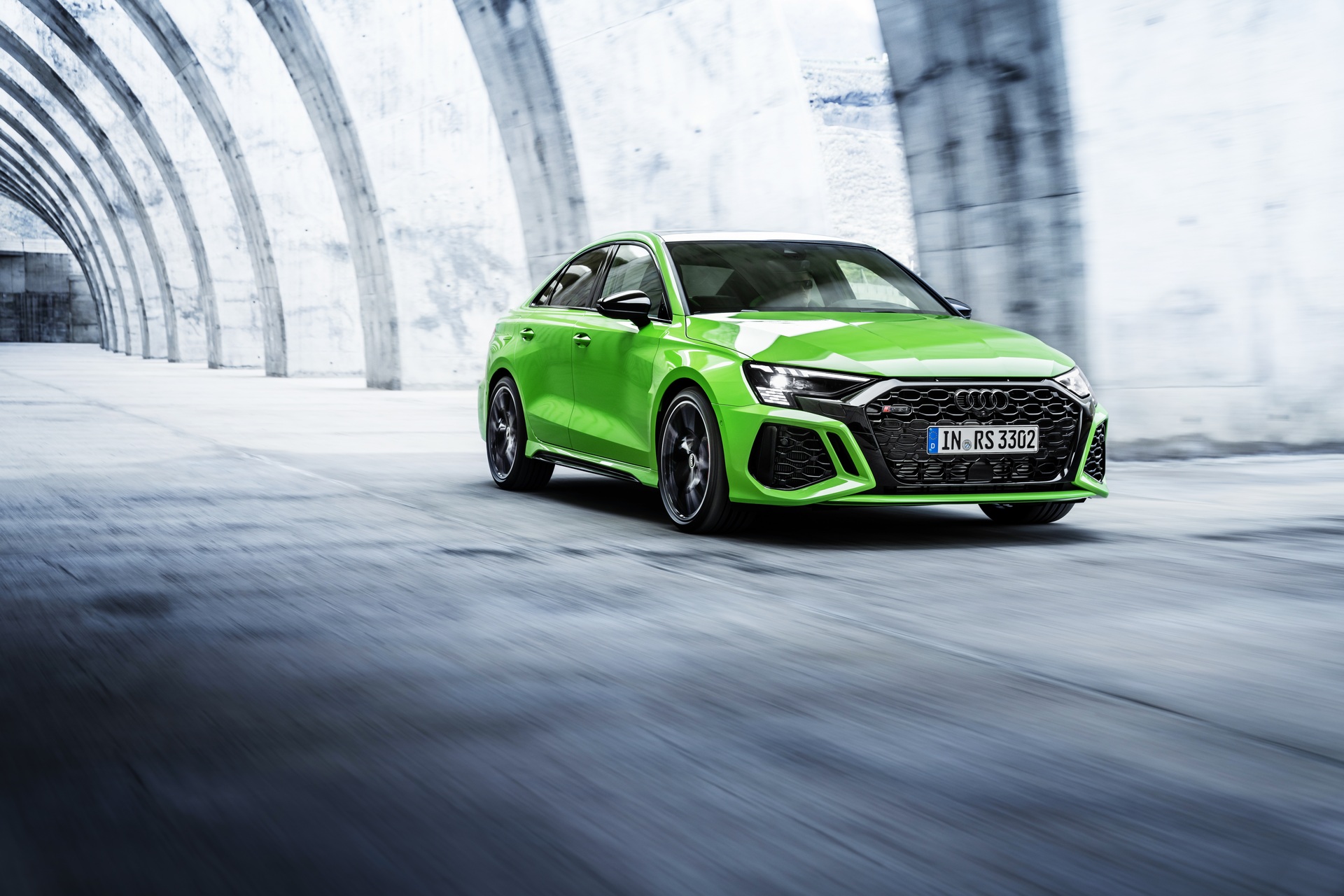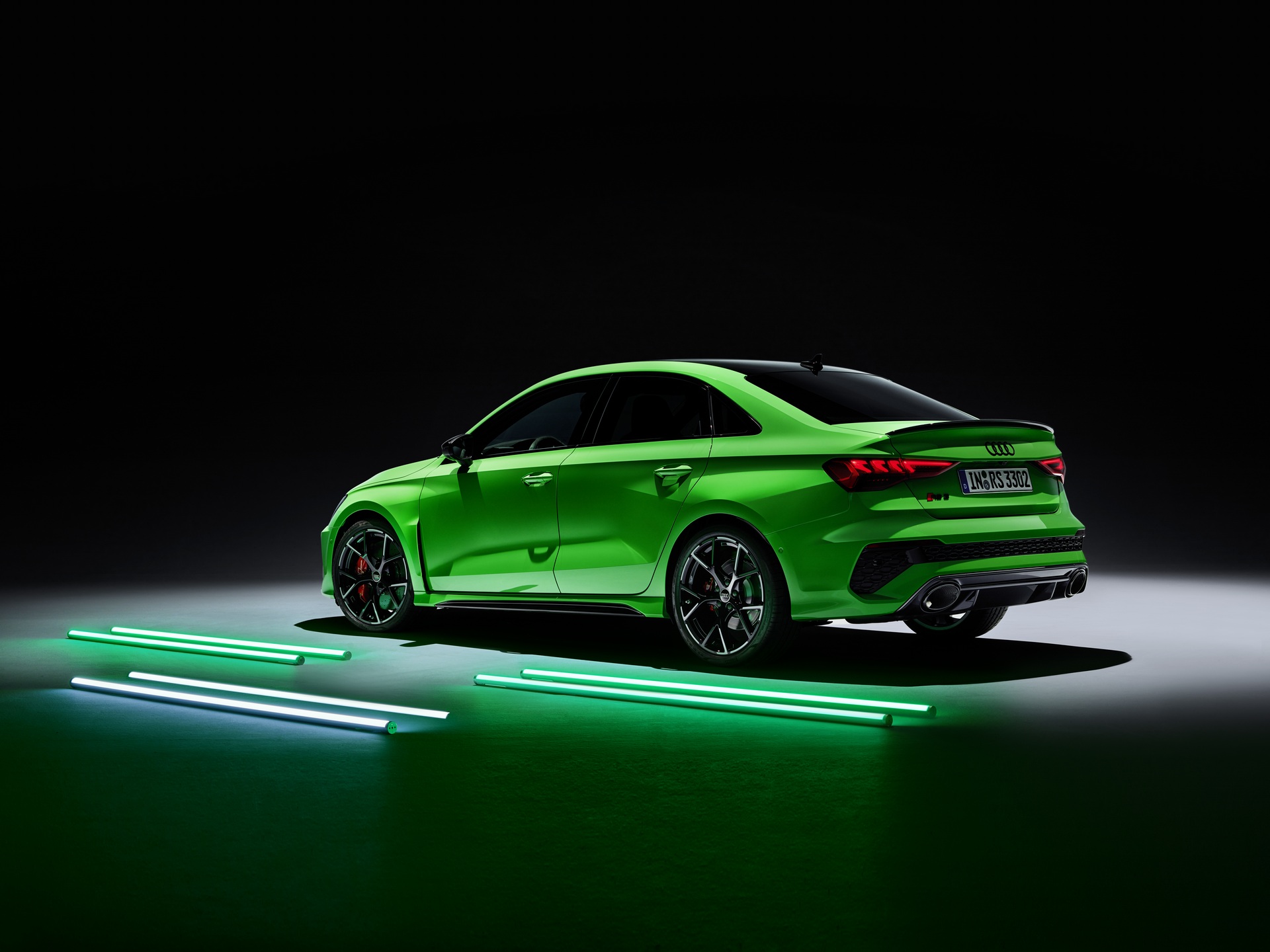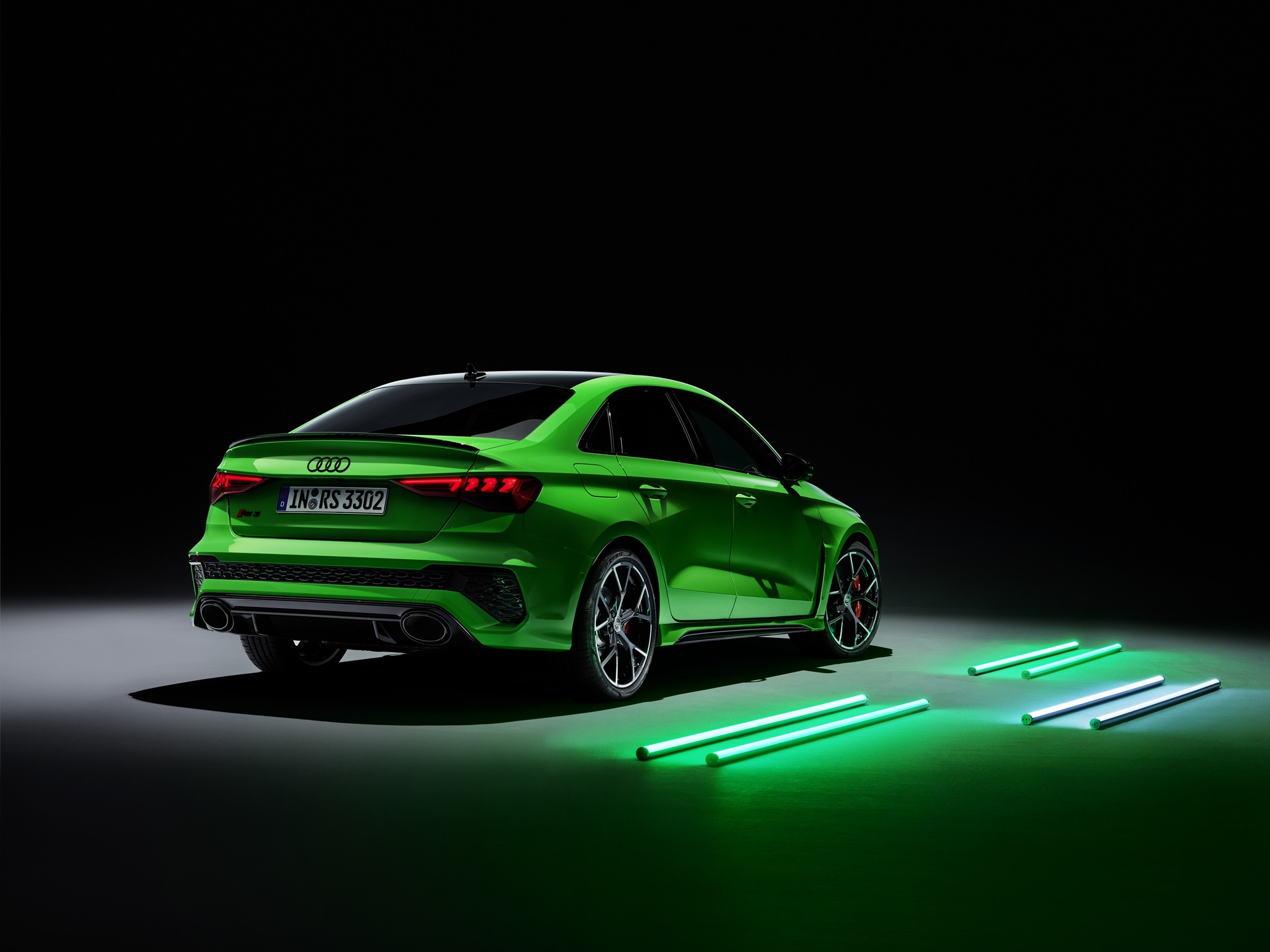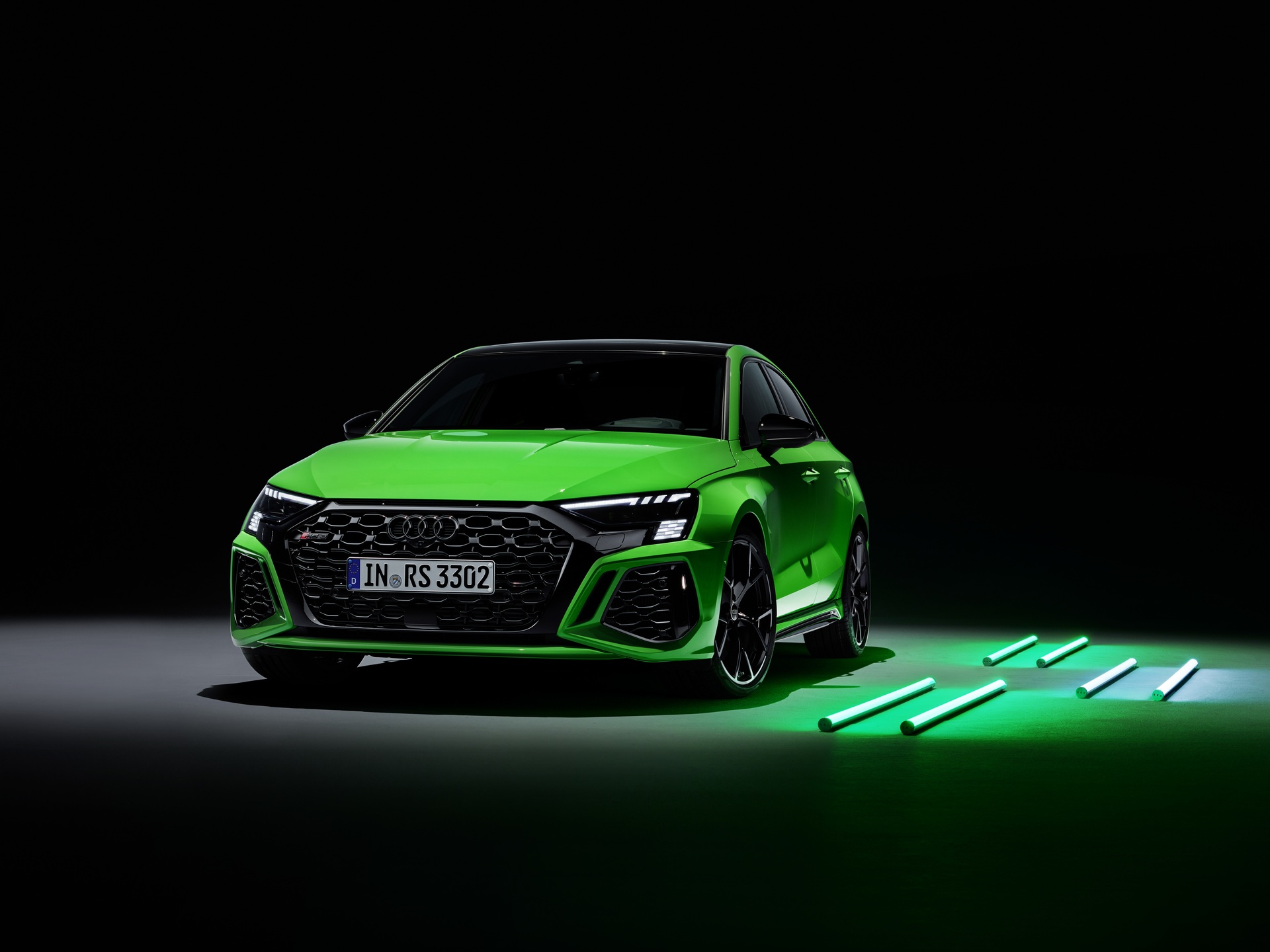Audi has fully unveiled the brand new RS 3 in both Sportback and Sedan bodystyles as the ultimate performance flagships in the compact hot hatch and sedan segment, though only the former is coming to North America again.
The new generation gets an even more aggressive design and the addition of the RS Torque Splitter technology for improved driving dynamics while retaining Audi Sport’s signature five-cylinder 2.5 TFSI engine.
Aggressive and angular bodywork
Starting with the exterior, the RS-specific bodykit distinguishes the RS 3 from any other A3 including the performance-oriented S3. The fourth-generation A3 body was already a muscular and sporty base but the extra bits transform the vehicle into a thoroughbred hot hatch.
The blacked-out face gives the car a meaner look in combination with the larger air intakes and the single-frame grille featuring a new honeycomb mesh. Other changes include the chequered-flag LED graphics on the headlights that can only be found on the RS 3, and the wider front fenders sporting air outlets behind the front wheels.
The dark-finished 19-inch rims are specifically designed for the RS 3 and for the first time they are shod in semi-slick Pirelli P Zero Trofeo R tires. The rear end is probably the most aggressive tail in the hot hatch world thanks to the larger decorative outlets, the menacing taillights, and the diffuser housing the signature oval tailpipes courtesy of the RS Sport Exhaust System with variable flap control for a richer sound on-demand.
Fittingly sports inside
Inside, the atmosphere is fitting for the performance characteristics of the car. The flat-bottom RS Sport Leather Steering wheel with Alcantara has an optional red stripe on the 12 o’clock position and comes with a dedicated RS Mode button and die-cast zinc shift paddles for the gearbox. The RS sport seats with optional Nappa leather look the part and provide extra support. Finally, if you go for the optional Design package, you will get more Red or Green accents all over the cabin.
The graphics on the 12.3-inch Audi Virtual cockpit plus are RS-specific showcasing the g-forces, lap, and acceleration times plus blinking shift indicator lights on the optional head-up display. Additionally, the 10.1-inch central touchscreen has an RS Monitor function showing useful information like the coolant, engine, and transmission oil temperatures as well as tire pressures.
What about performance?
Under the bonnet, we find the turbocharged five-cylinder 2.5 TFSI unit producing 394 hp (294 kW / 400 PS) in Europe and up to 401 hp (299 kW / 407 PS) in the US, available between 5,600 – 7,000 rpm. In both cases, the maximum torque is a healthy 500 Nm (368 lb-ft) at 2,250 – 5,600 rpm, which makes for a 20 Nm (14 lb-ft) increase from its predecessor. The engine is exclusively mated to a revised seven-speed dual-clutch S-tronic transmission sending power to all four wheels.
See Also: 2021 Audi S3 Sportback And S3 Sedan Debut With 306 HP, 0-62 MPH In 4.8 Seconds
While the new Audi RS 3 Sportback and Sedan don’t beat the Mercedes-AMG A45 S and the CLA 45 S in terms of power as Stuttgart’s record-breaking four-cylinder is producing 415 hp (310 kW / 421 PS), they do take the crown for the fastest performance in the segment. Audi claims the 0-100 km/h (0-62 mph) acceleration takes just 3.8 seconds, making it 0.3 seconds faster than the previous RS 3 and 0.1 seconds faster compared to its main rival from AMG. Top speed is electronically limited to 250 km/h (155 mph), but it can be optionally upgraded to 280 km/h (174 mph) or even to 290 km/h (180 mph) when fitted with the RS Dynamic package.
Faster around the corners through torque vectoring allowing for a new drift mode!
The big news in the new generation is the RS Torque Splitter which replaces the rear axle differential of its predecessors for a more sophisticated electronically controlled multiple clutch package on each rear driveshaft featuring independent control units.
This setup allows for active and fully variable torque vectoring on each of the rear wheels. Besides improving agility, reducing understeer, and making the RS 3 faster around the corners, there is also the new “RS Torque Rear” drift mode. The latter is reserved for the racetrack for safety reasons, making the RS 3 tail-happy by directing all power to one of the rear wheels.
Besides the usual driving modes available through the Audi drive select system (Comfort, Auto, Dynamic RS Individual, and Efficiency), there is also the “RS Performance” mode which creates the best possible configuration for track driving, reducing understeer and oversteer as much as possible.
A more focused suspension setup and stronger brakes
The standard non-active RS sports suspension (with double wishbones at the front and a four-link rear axle) comes with new shock absorbers, stiffer bearings, and a valve system for quicker response. The RS 3 sits 10 mm lower than the S3 and 25 mm lower than the A3. The slightly larger negative camber – by one degree on the front and by half a degree on the rear – improves steering response in combination with the variable-ratio progressive steering.
Most buyers though will probably get the optional RS sport suspension plus which comes with adaptive damper control technology, continuously adjusting the characteristics of each shock absorber according to the conditions and the selected driving mode over three settings – comfortable, balanced, and sporty. There is also a new modular vehicle dynamics controller (mVDC) which “synchronizes the torque splitter, adaptive dampers, and wheel-selective torque control for precise steering and handling”.
The base-spec RS 3 comes with ventilated and drilled steel discs measuring 375 mm at the front and 310 m at the rear, with six-piston calipers and improved cooling. Those units are 10 kg (22 lbs) lighter than the previous-gen but if you want the best braking performance you can get the optional 380 mm ceramic brakes for the front axle which will save you an additional 10 kg of unsprung weight. To let people know you have the ceramic discs from a distance, Audi offers a wider variety of colors for the brake calipers including gray, red, or blue (in contrast, only black and red calipers are available with the steel brakes).
Orders for the new Audi RS 3 Sportback and RS 3 Sedan will open in Europe from mid-August, with first deliveries expected in the fall. The base price in Germany starts from €60,000 ($70,831) for the Sportback and from €62,000 ($73,192) for the Sedan.
Only the RS3 Sedan is coming to America
As for the U.S., we’re only getting the sedan bodystyle, which is expected to go on sale by the end of the year. Audi hasn’t released pricing information yet, but given that the 2020 RS3 started at $56,200, the new model could cost around $60,000.








